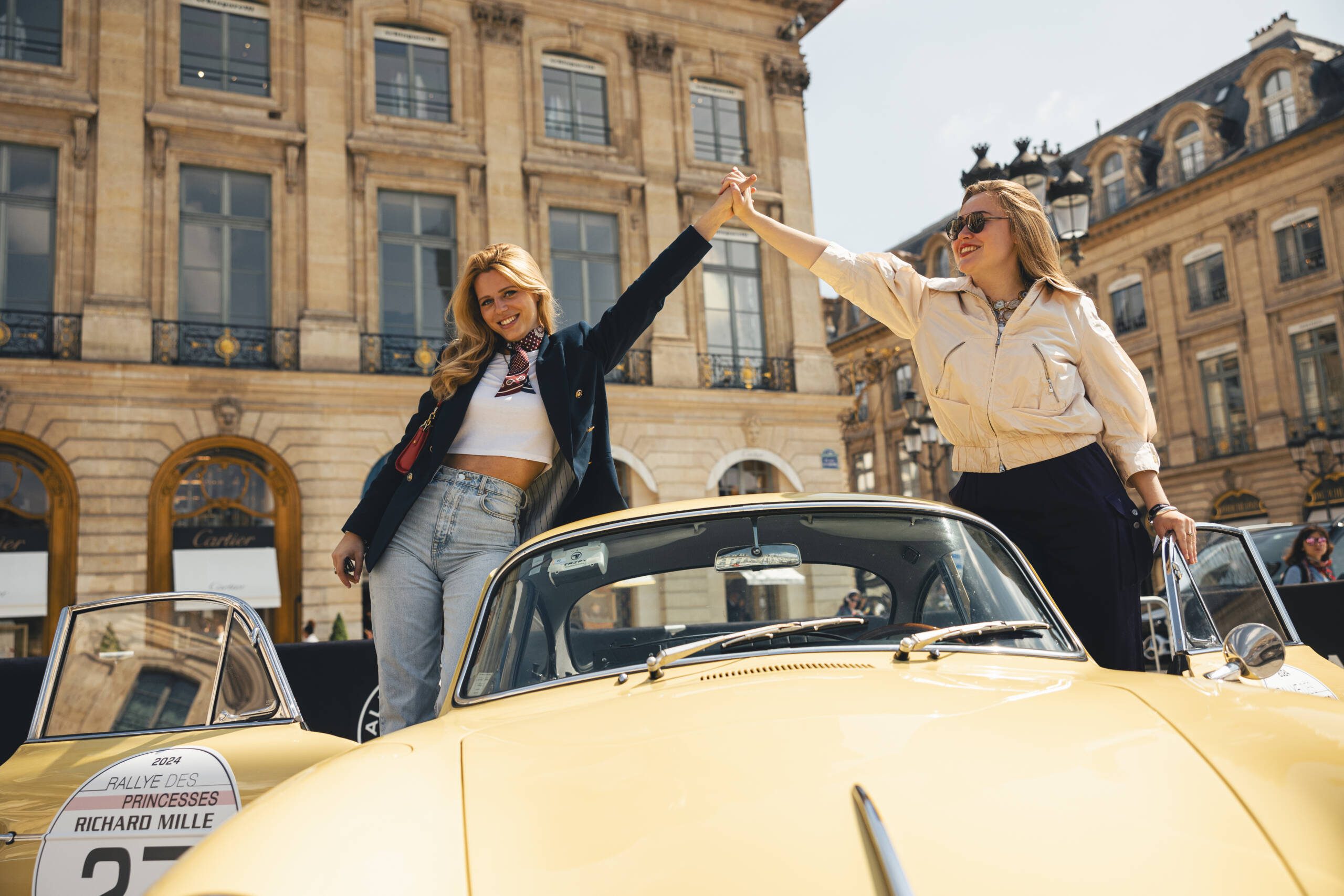
Fabienne Amez-Droz and Masha Nosova at the start of the Rallye des Princesses with Richard Mille’s 1964 yellow Porsche 356 type C on Place Vendôme, Paris
Castles, mountain passes, vintage cars, vintage roadbooks, adrenaline and dressing up. When LUX was invited to drive the classic Porsche 356 from Place Vendome in Paris to the mountains of Andorra, on the Spanish border, via the Atlantic coast, much of La France Profonde and many castles, on the all-women Rallye des Princesses by Richard Mille, we couldn’t refuse.
Over five days, the intrepid LUX driving team, comprising the car-mad Masha Nosova and luxury maven Fabienne Amez-Droz, weathered wrong turns, quick changes for banquets, and the challenge of driving a classic car older than their combined ages, covering nearly nine hours each day in a yellow Porsche 356 type C from 1964.
Their satnav was an old-fashioned roadbook, needing the navigator to be on the ball every minute; and their competition was some of the most experienced women regularity rally enthusiasts in Europe. Interestingly, women make up an increasing proportion of this pioneering brand’s clientele: just one of the ways Richard Mille has reinvented the luxury watch market against all odds. In keeping with the playful yet utterly serious nature of the brand, days picking through routes in rural France were rounded off by spectacular evenings in private chateaux.
Now, as this year’s driving season in Europe gets under way, we look back on our team’s journey across France with long-term partners Richard Mille. Masha and Fabienne take up the story
The Rallye des Princesses isn’t about racing at full throttle, and, despite Masha’s efforts to the contrary, we were not required to shatter speed limits and frighten sheep —this is a regularity rally, where maintaining consistent speed and precision is key, with your timing carefully monitored throughout the course.
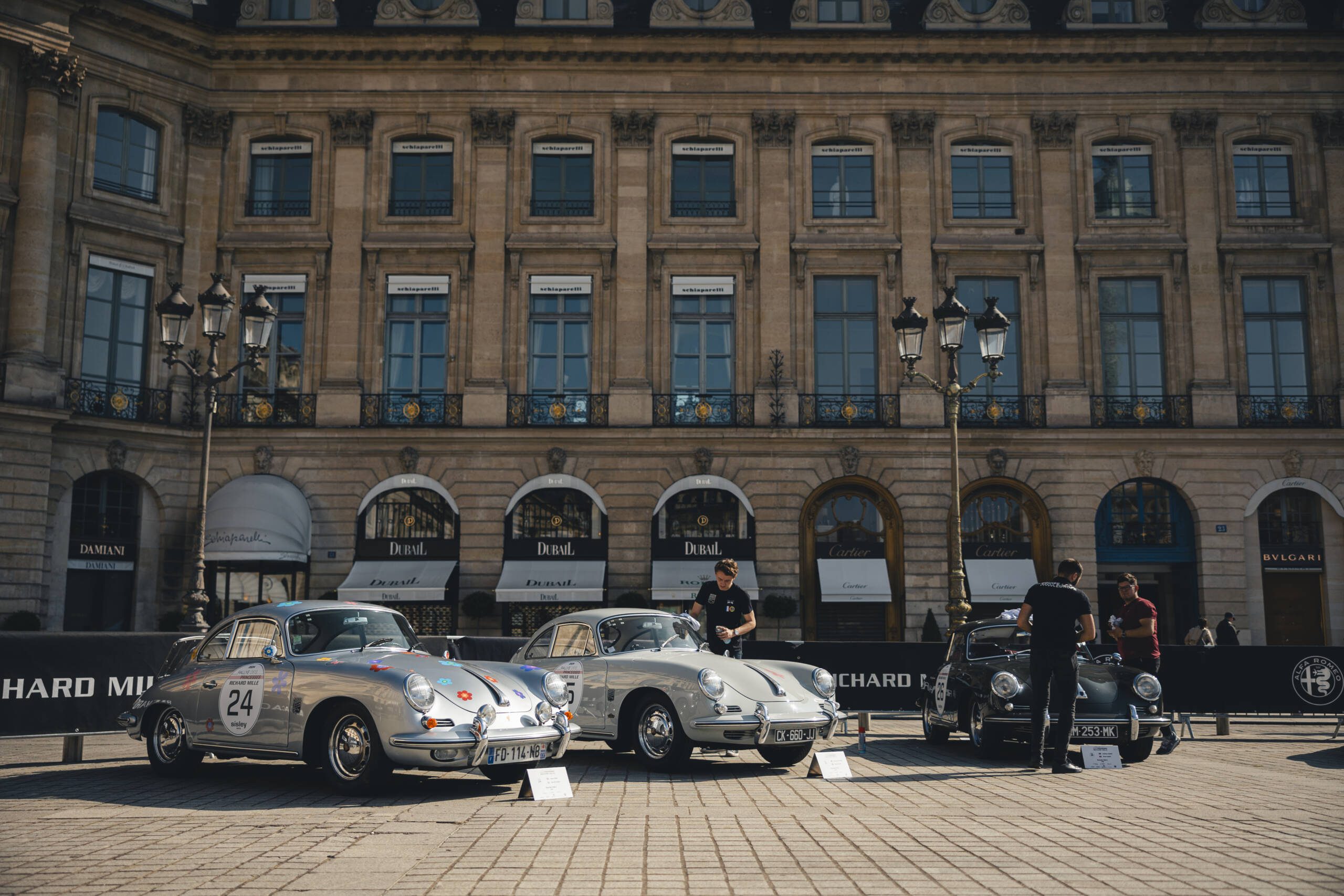
All of the Richard Mille Rallye des Princesses cars were lined up on Place Vendôme in Paris, where the rally starts
After a day on the road, the adventure continued with glamorous evenings offering the perfect chance to unwind and connect with competing drivers, and resolve arguments with each other about why we missed the turning back in that village (Masha was driving too fast; Fabienne wasn’t concentrating on the road book).
The rally is unique because it exclusively features female drivers and co-drivers, celebrating women’s passion for vintage cars and racing. Participants race using classic cars dating from the 1930s to the 1980s, adding to the event’s nostalgic charm. Vehicles often include iconic models like Porsche, Ferrari, Jaguar, and Aston Martin.
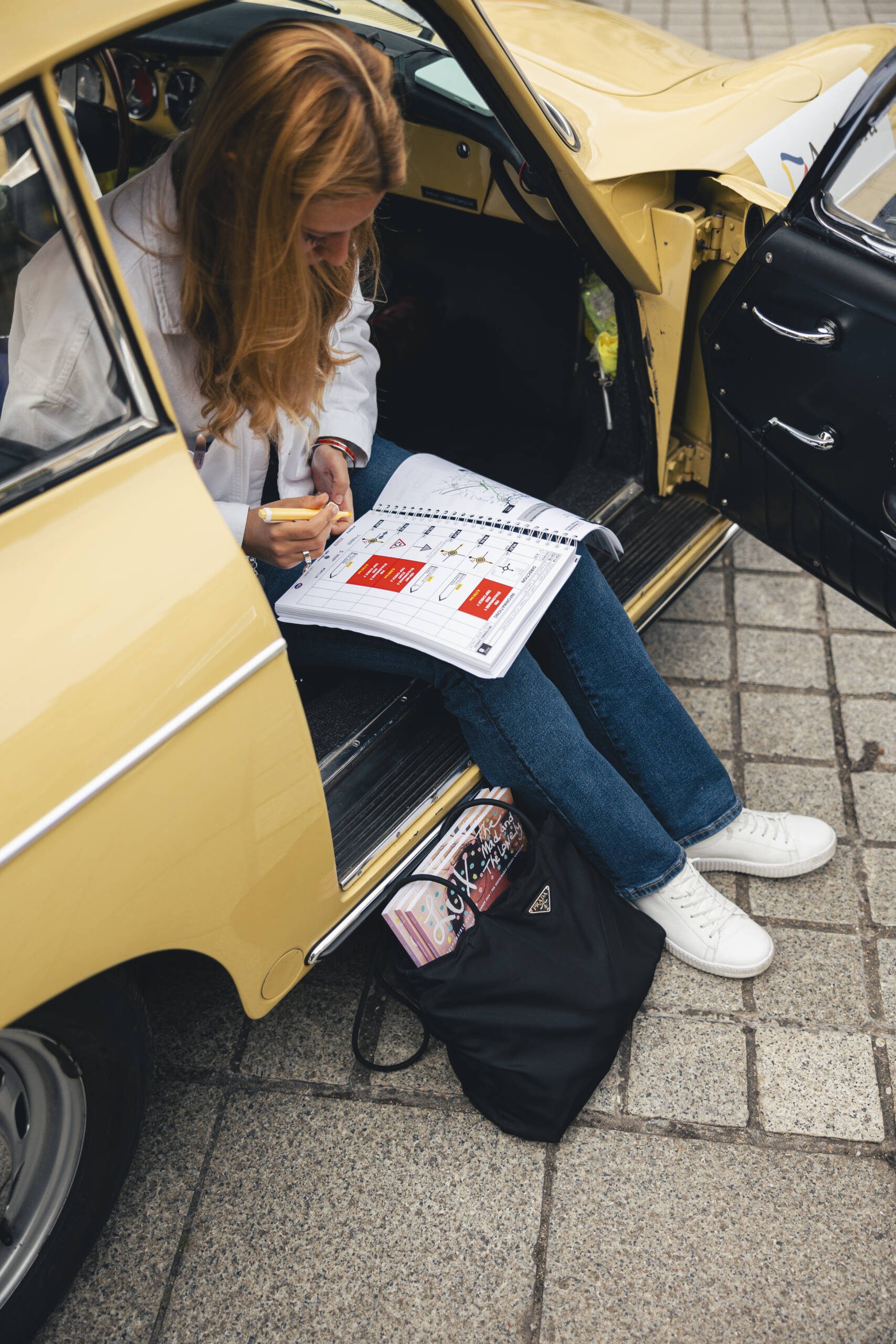
At the Rallye des Princesses you have to navigate the routes with a roadbook
The Rallye des Princesses was established in 2000. Since then, it has become an annual event, attracting participants from around the world who share a passion for classic cars and the thrill of rally racing. The rally has grown significantly over the years, blending competition with elegance and maintaining its reputation as one of the most prestigious women’s automotive events in Europe.
It’s a celebration of elegance, camaraderie and competitive thrill in the world of vintage cars. And also the ability to get changed rapidly from roadwear – the cars generally have no A/C – to evening wear, the mark of a true princess.
Training Day
In the two days leading up to the start, all the participants arrived in Paris. On the training day, the teams got to know the vintage cars and spent an entire day driving around a small village outside of Paris to get to know how an old-fashioned roadbook works.
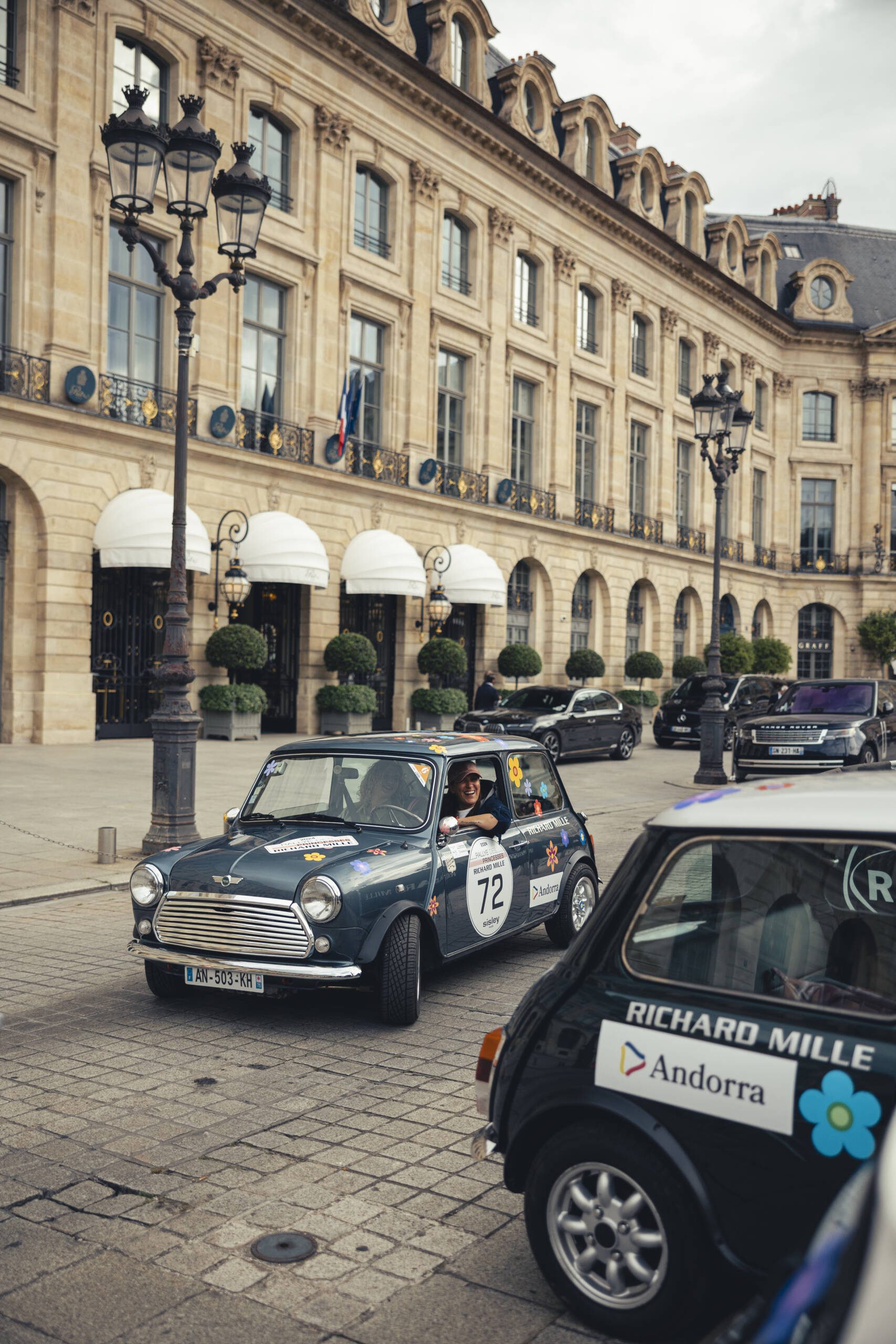
Amanda Mille, Brand and Partnerships Director of Richard Mille, drove with us on the first day with a vintage Mini
Having arrived at the Equipe Europe garage, where we met and became acquainted with our rally vehicle, the yellow Porsche 356, it felt as if we had stepped into a classic car museum. Specialising in the restoration and servicing of historic and rare racing cars, the vintage Delahayes, Bugattis and Aston Martins (to name just a few) against the backdrop of the picturesque French countryside inspired us for our journey ahead.
When Masha and I first saw the roadbook, we were quite taken aback—how on earth would we manage this?
After a few hours of practice, Masha and I had become a fairly well-coordinated team. In the evening, we celebrated our training day near the starting point at Place Vendôme.
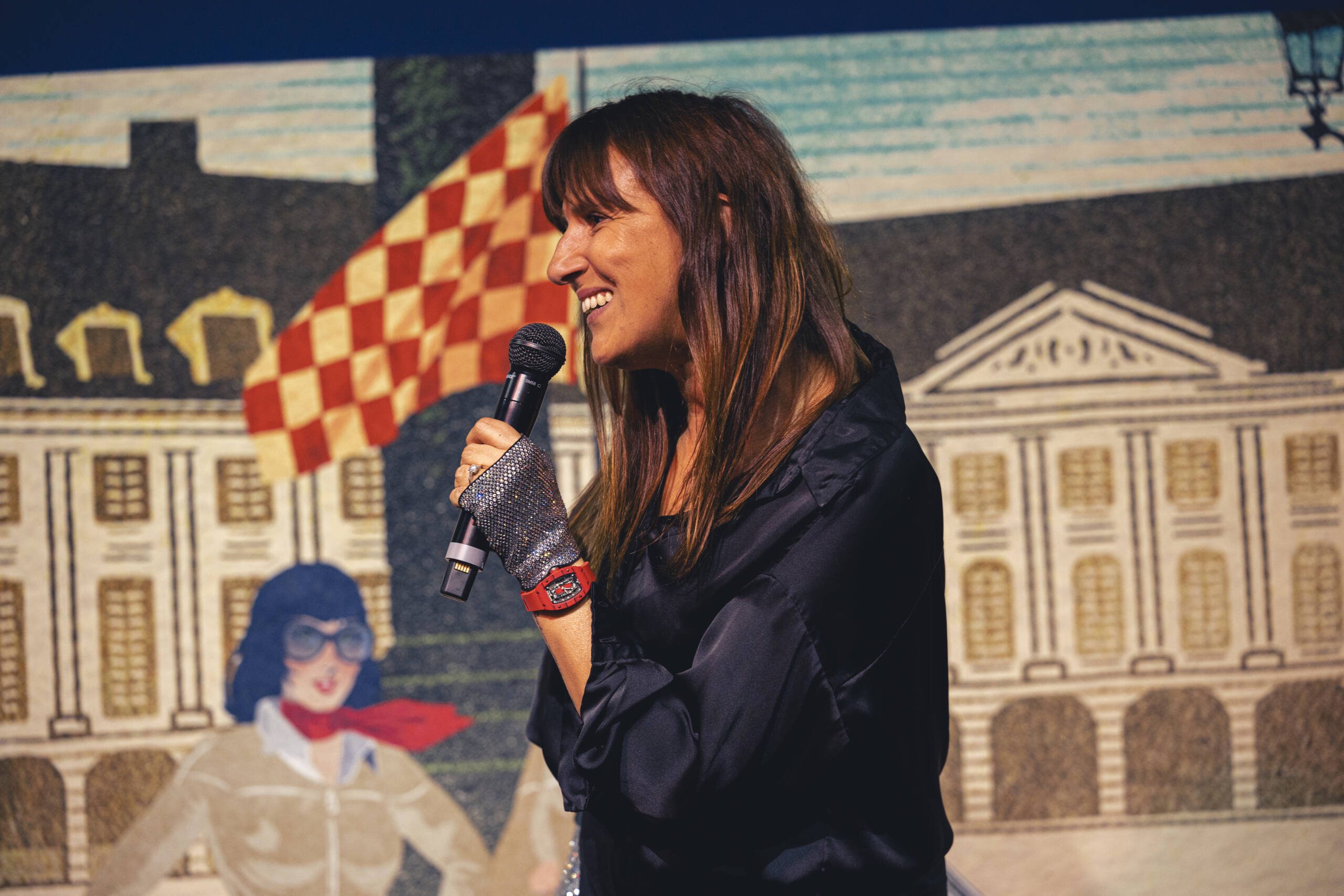
Amanda Mille, Brand and Partnerships Director of Richard Mille, held a welcome speech at the aperitif.
Follow LUX on Instagram: @luxthemagazine
Race Day 1 – Waving Goodbye in Paris
In an enclosure just outside the Ritz hotel, around 60 classic cars of all types – from Minis to Mustangs, Porsches to Aston Martins, Alfa Romeos and the odd Ferrari – are gathered. We drove through the bustling city, passing by the Arc de Triomphe, along the Seine and the Eiffel Tower.
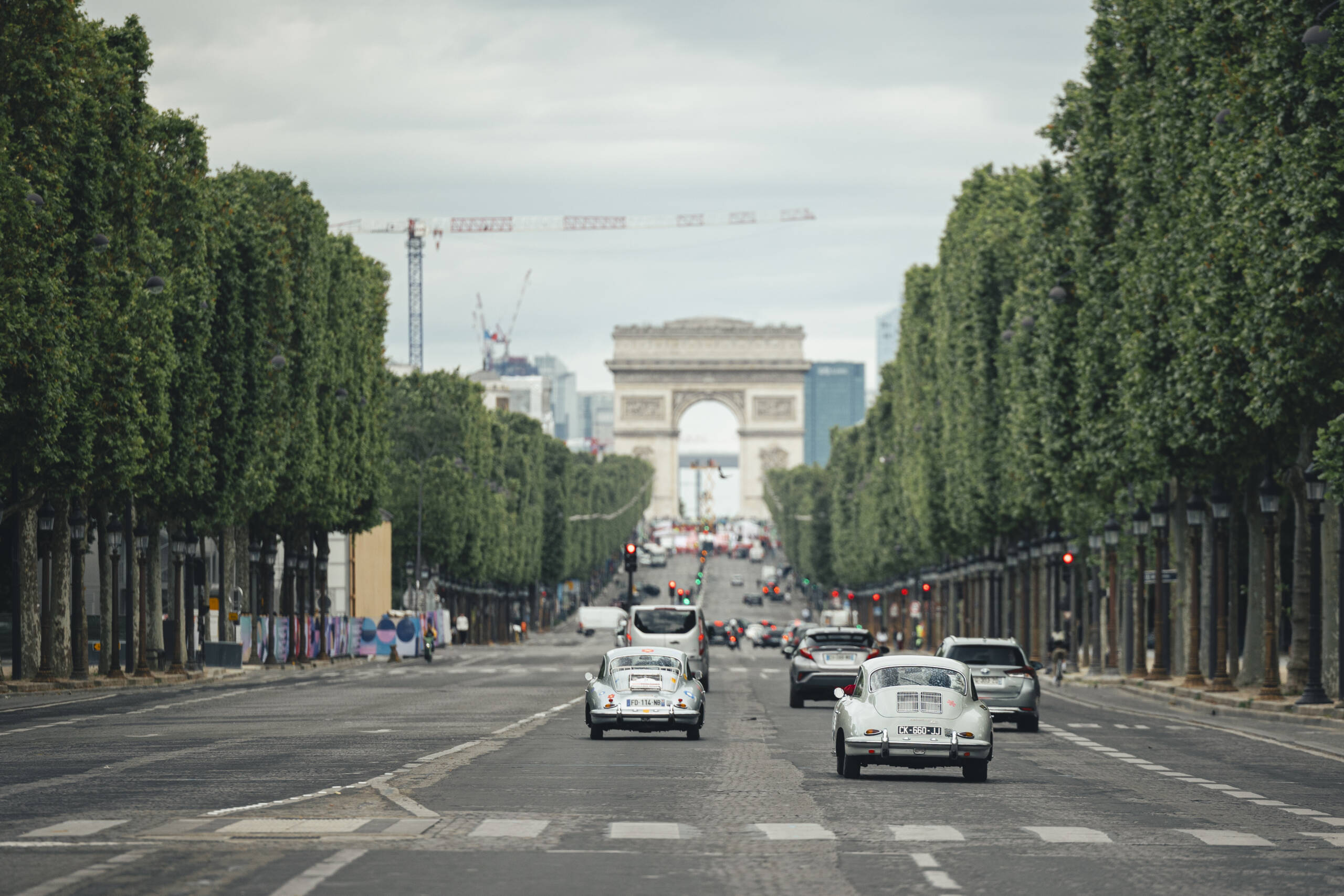
After leaving the Place Vendôme, we followed the roadbook via the l Arc de Triomphe on the way to Tours
For several hours, we continued through the countryside toward Tours, stopping along the way for lunch at Domaine de Montigny-le-Gannelon and a coffee break at Chateau de Chambord.
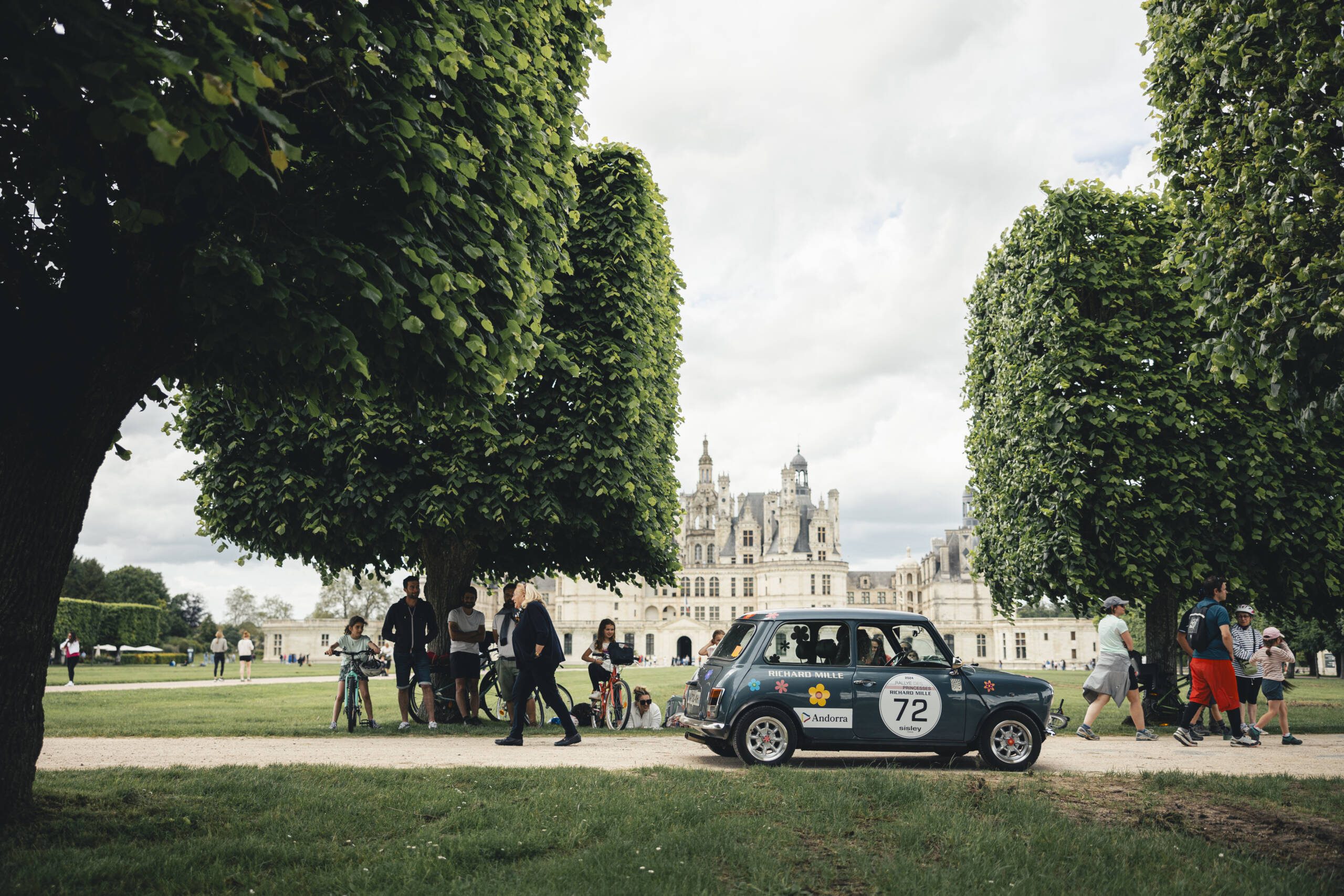
To get us through the many hours of driving, the Richard Mille team organised many coffee and cake breaks. On the first day, this break was at Chateau de Chambord
Having concluded our first day of rallying, we arrived at our final checkpoint of the evening at the Medieval La Grange de Meslay, one of the most historic fortified farms of the 13th century.
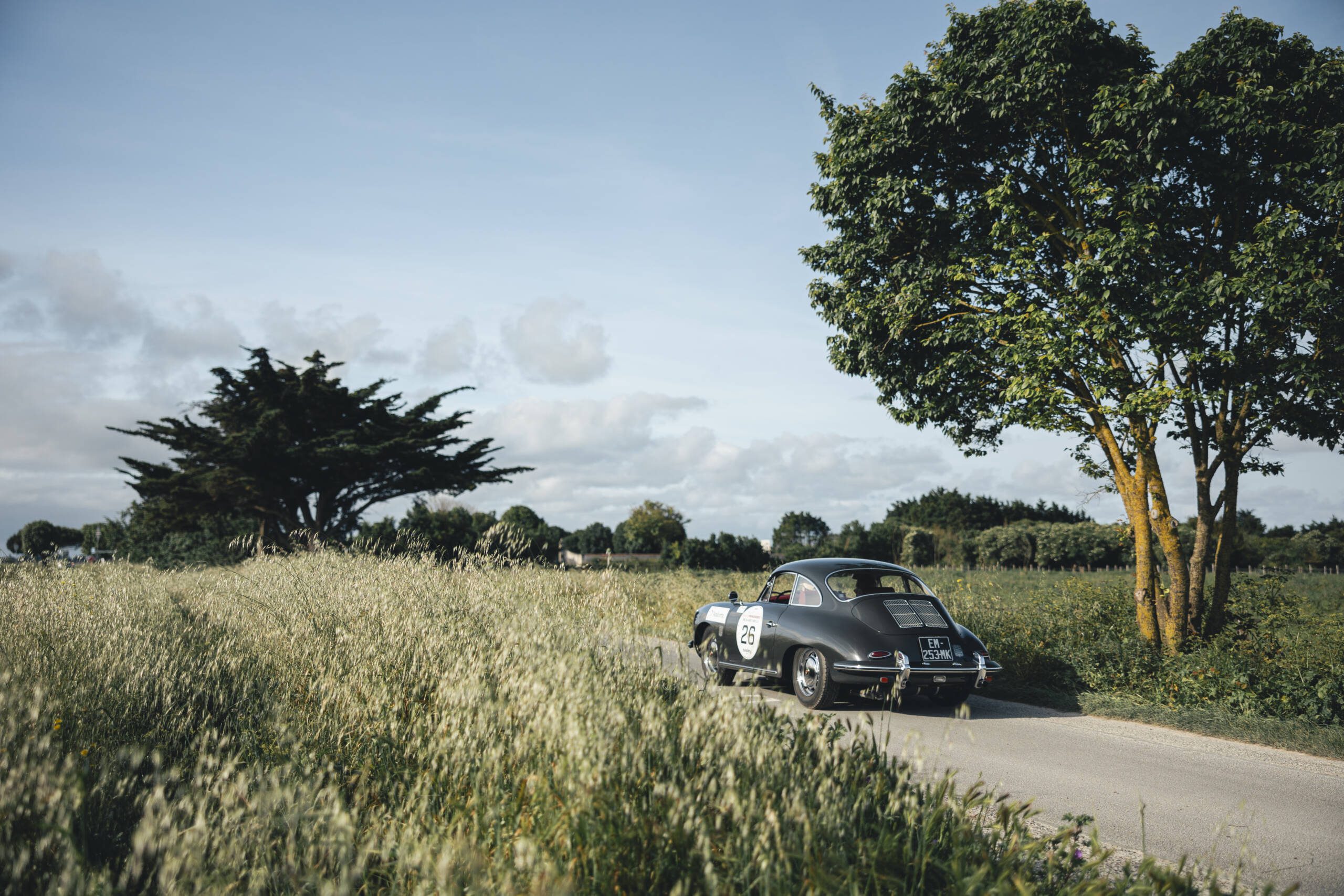
The first race day was filled with sunshine and rural routes
Each day, we drove around 9 to 10 hours. The routes in the roadbook led us through scenic landscapes and past historic castles.
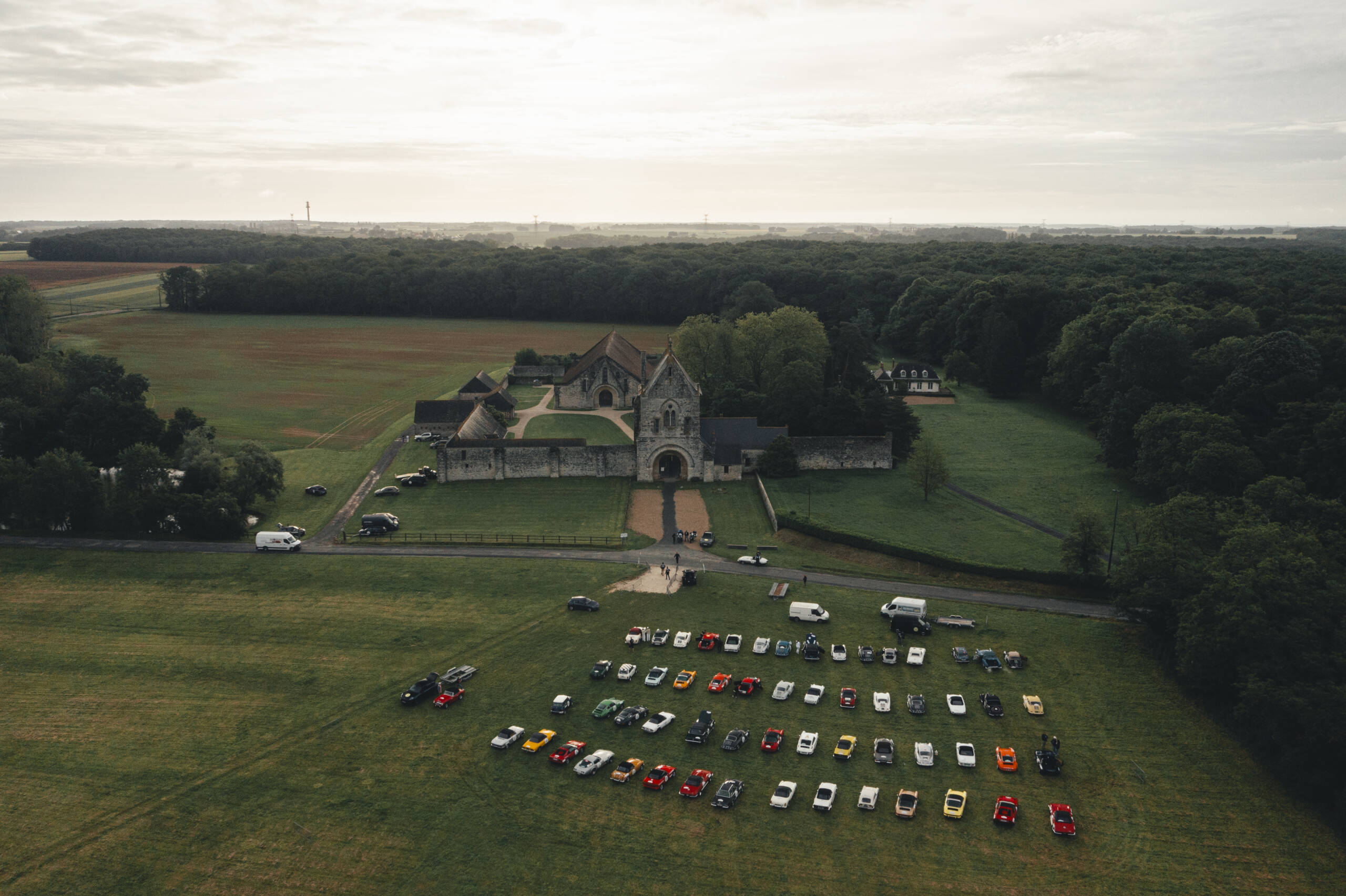
The finish line of the first day was at a castle near Tours
Race Day 2 – Island Life on St-Martin-de-Ré
After a good night’s sleep and a big breakfast, we prepared to tackle the second day.
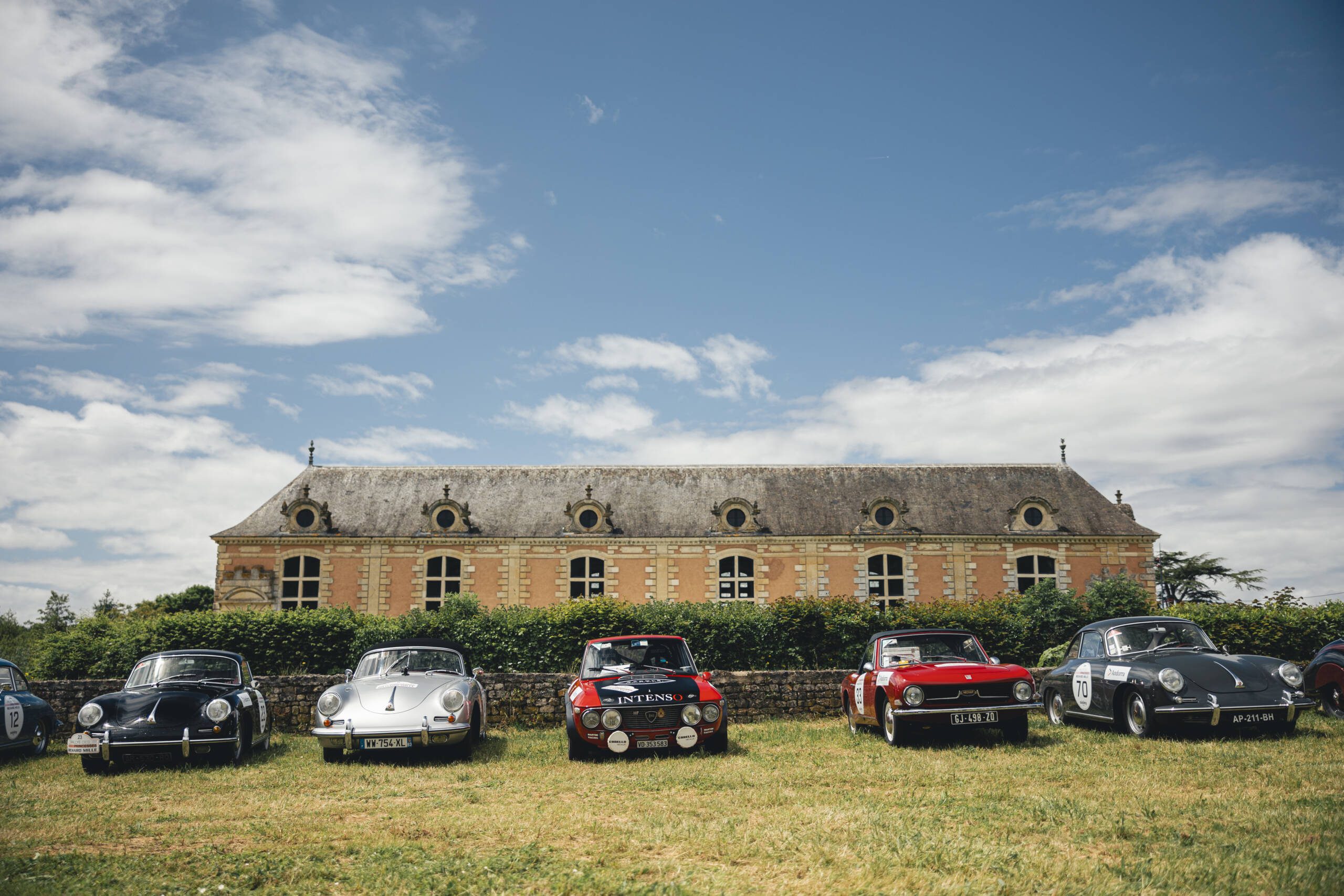
All the vintage cars parked next to each other at the lunch spot
The destination for the second day was the French peninsula of Île de Ré, which is a French version of the Hamptons. Along the way, we had lunch at La Mothe-Saint-Héray, an opulent 17th-century fortress.

Lunch was held at L’orangerie de La Mothe Saint-Héray
After turning off our engines, we followed the sounds of clinking plates and lively discourse of our fellow drivers, navigating ourselves through the splendour of orange and lemon trees scattered across the gravelled courtyard.
After lunch with a side of laughter about the sharp corners and unexpected turns, we continued our journey south.
Read more: Car collector king Fritz Burkard on his Pearl Collection
Driving across the 3km Île de Ré bridge that connects La Rochelle and Riverdoux Plage, we decided to slow down, not only for the speed limit but to truly appreciate the expansive sea rolling into the horizon and the sunset visible in our rear view mirror.
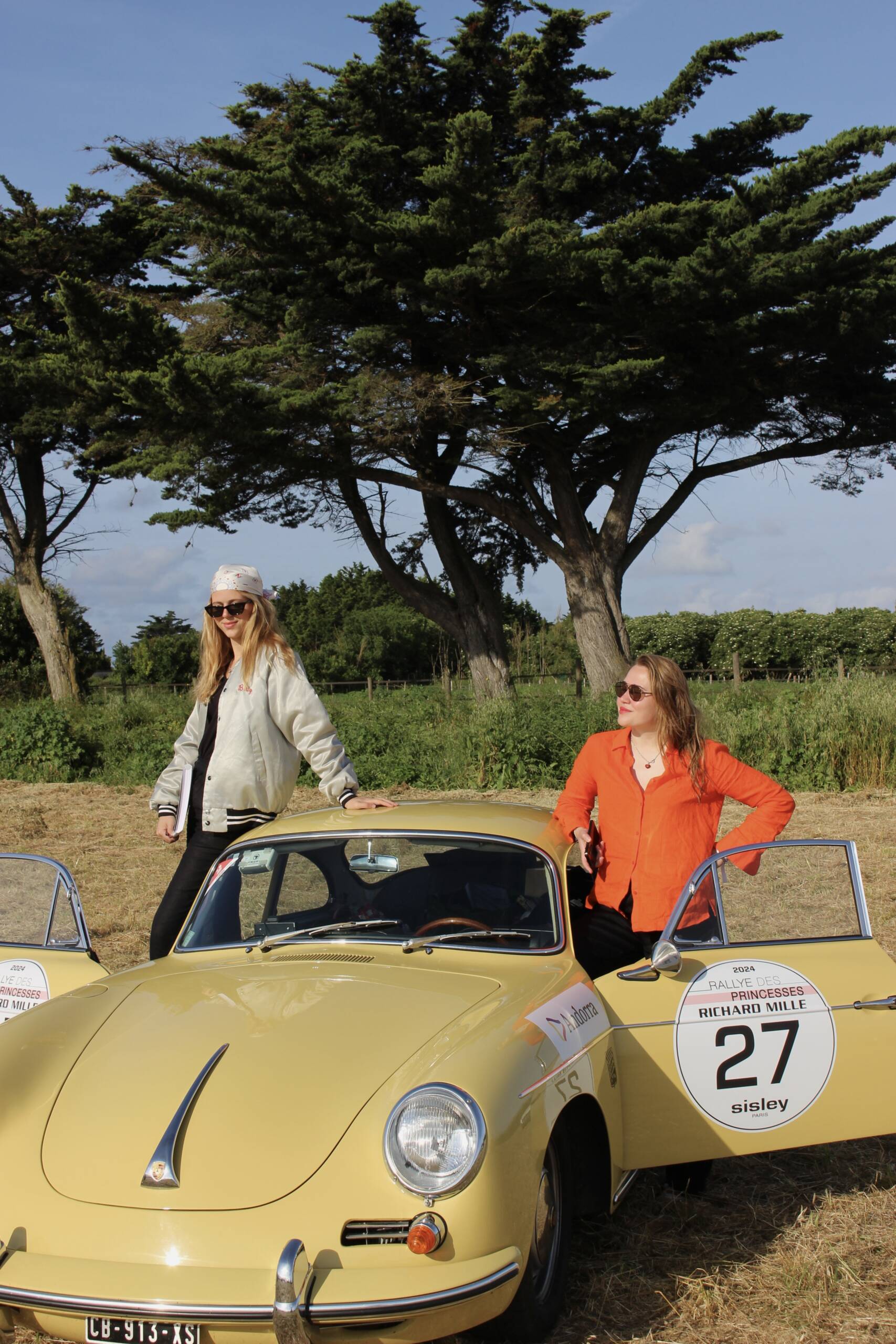
Fabienne Amez-Droz and Masha Nosova with car number 27
The day ended near the coast in St. Martin-de-Ré. Upon our arrival to the seaside hotel, we took the opportunity to briefly swap our 4-wheel vehicle to 2 wheels to cruise around the island with bicycles provided by the hotel – experiencing the real Île de Ré – lifestyle.
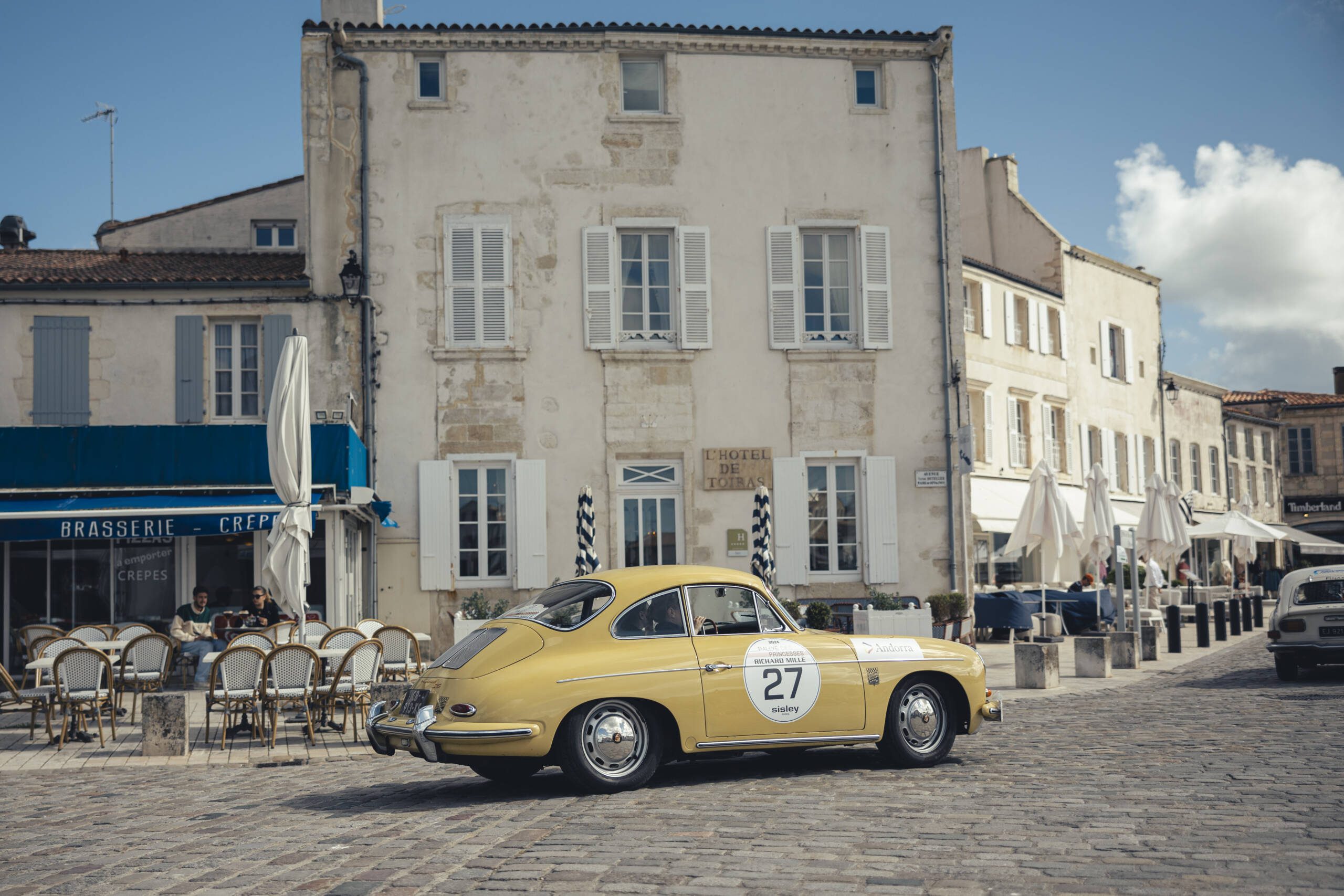
The vintage Porsche 356 type C driving through the town of St-Martin-de-Ré
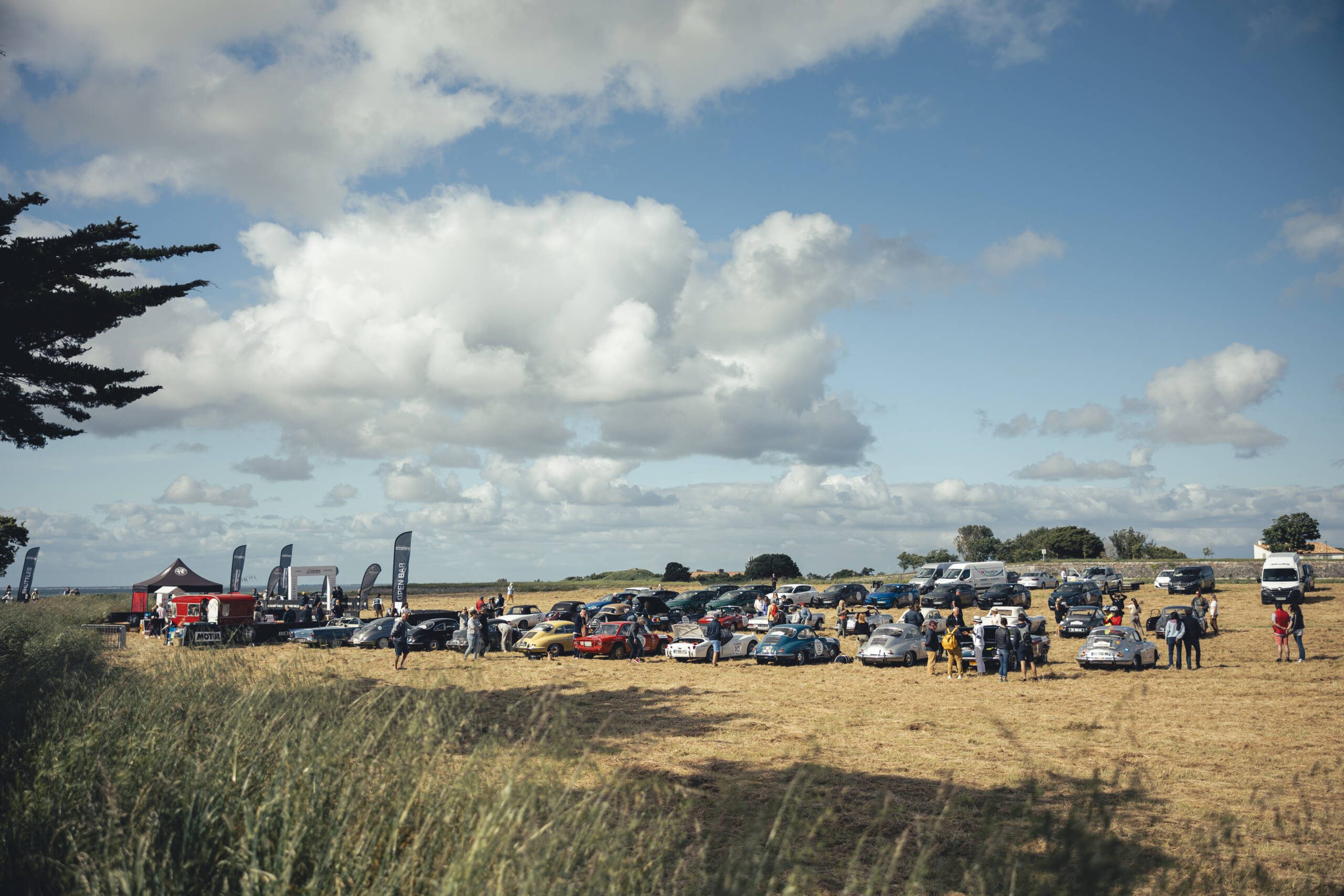
The end destination of the second day was St. Martin-de-Ré at the coast
Race Day 3 – Medieval ages in Sarlat-la-Canéda
After our brief stay on the island, we set off again, leaving the salty air behind. The third race day was filled with impressive landscapes and pitstops to several medieval French castles like Château de Villebois-Lavalette and Château de Hautfort.

In case of any issues with the cars or if you got lost, there was a group of very kind mechanics following us and helping us
Palatial gardens, grandiose architecture and the sounds of revving engines satisfied our appetites to early set off for our afternoon leg.

At the end of every racing day, drivers were welcomed at the parking spot with a glass of champagne
At the end of the day, we were invited to a medieval castle in Sarlat-la-Canéda, where we were greeted by ‘real’ knights and princesses. Even the rallye princesses were dressed in medieval attire and celebrated the third day with a feast in the castle, paired with an exhilarating fire show.
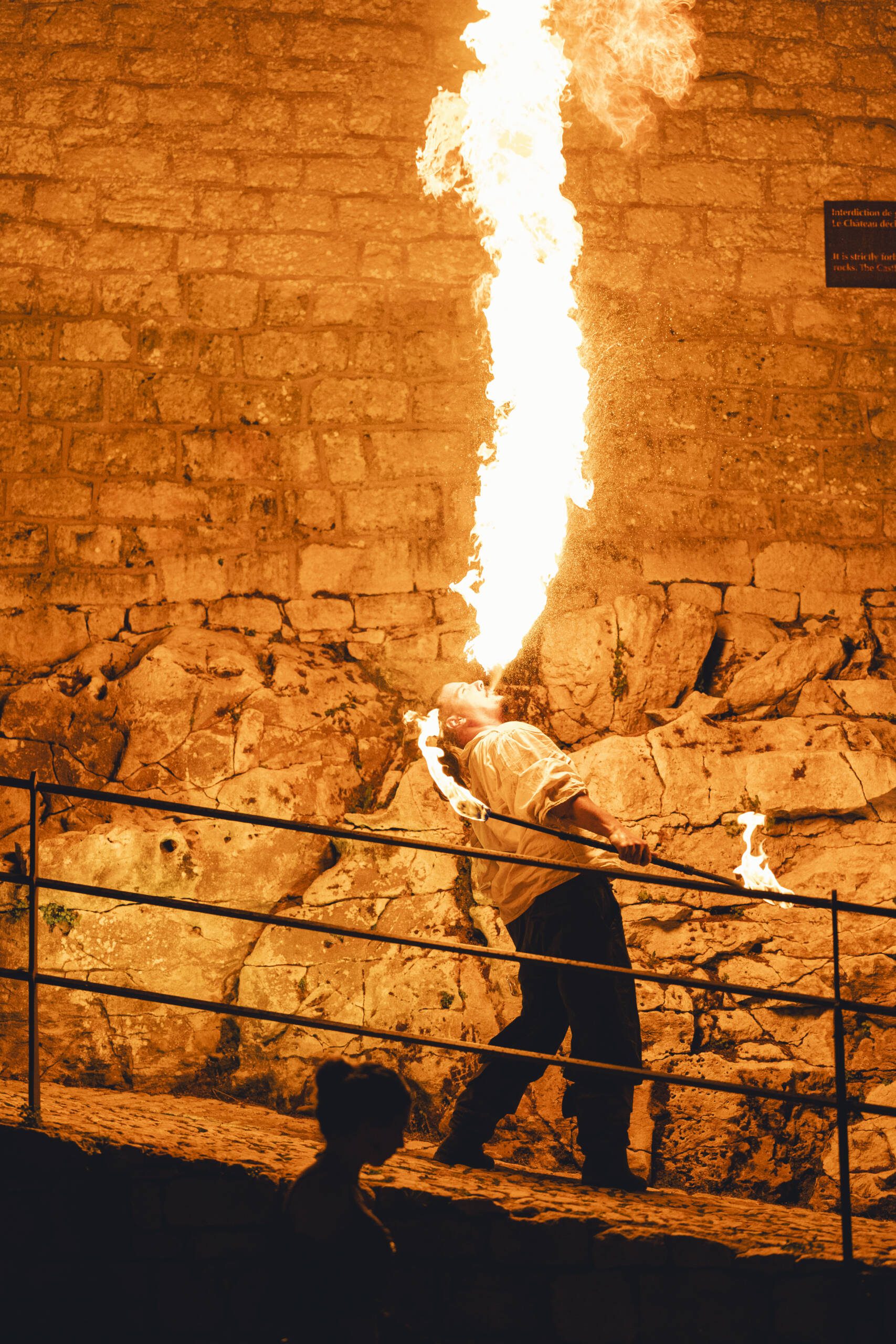
After the feast in the medieval castle there was a huge fire show
Race Day 4 – Carcassonne
Spending the night at Hotel Golf du Domaine de Rochebois, we rose in the early hours of the morning to a light and decadent breakfast overlooking the gentle glow from hot air balloons that spread across the rugged and bushy landscape.
On our fourth day, we embarked towards Carcassonne, located in the Occitanie region of southern France, famous for its medieval fortress and is a UNESCO World Heritage site. Stepping inside feels like travelling back in time, having an immersive medieval experience.
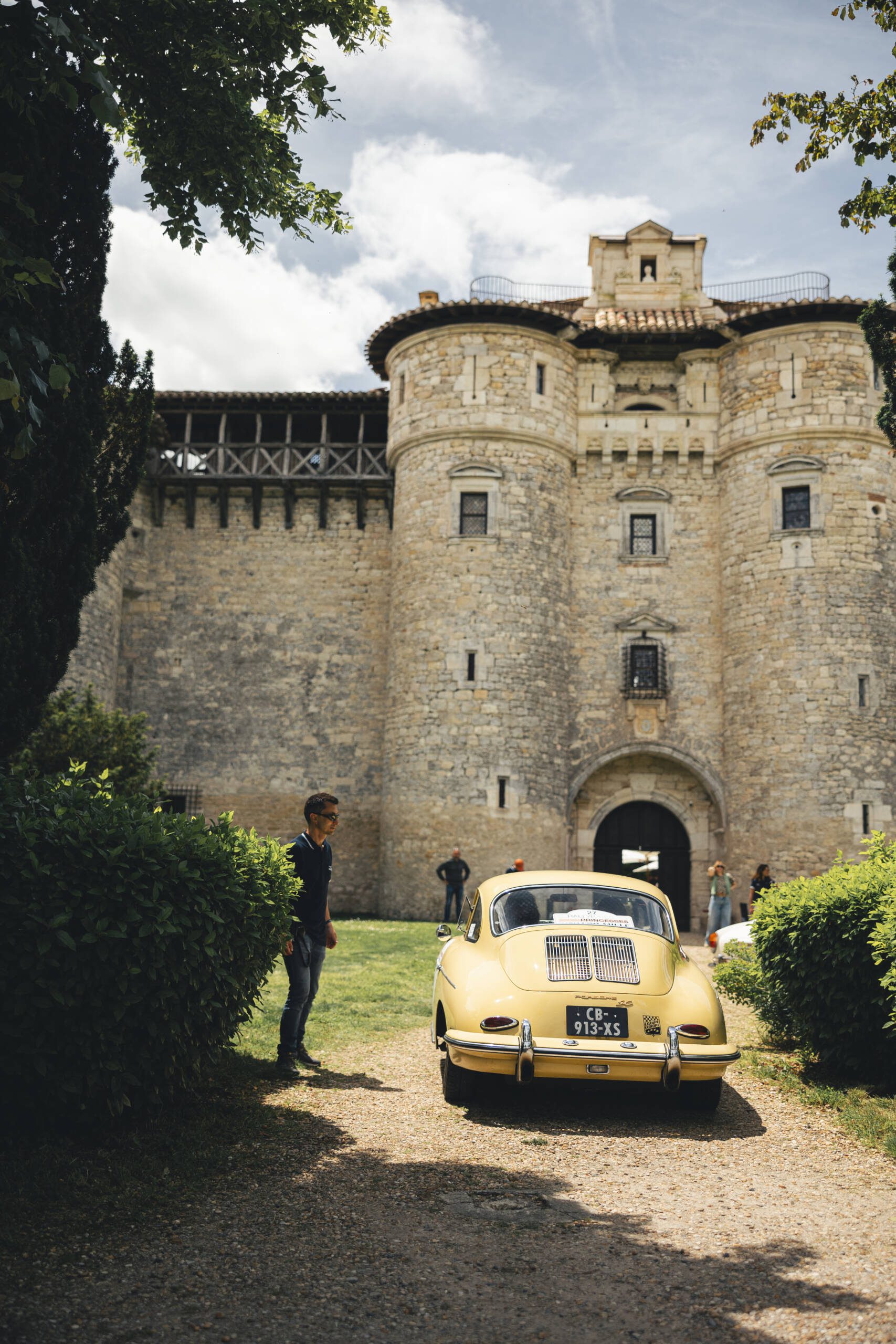
We stopped for some lunch at Château de Mauriac
Inside the thick walls of the fortress, all the Rallye des Princesses teams gathered for the delicious traditional Cassoulet – a hearty dish made from white beans, sausage, and duck – a must-try in the region.
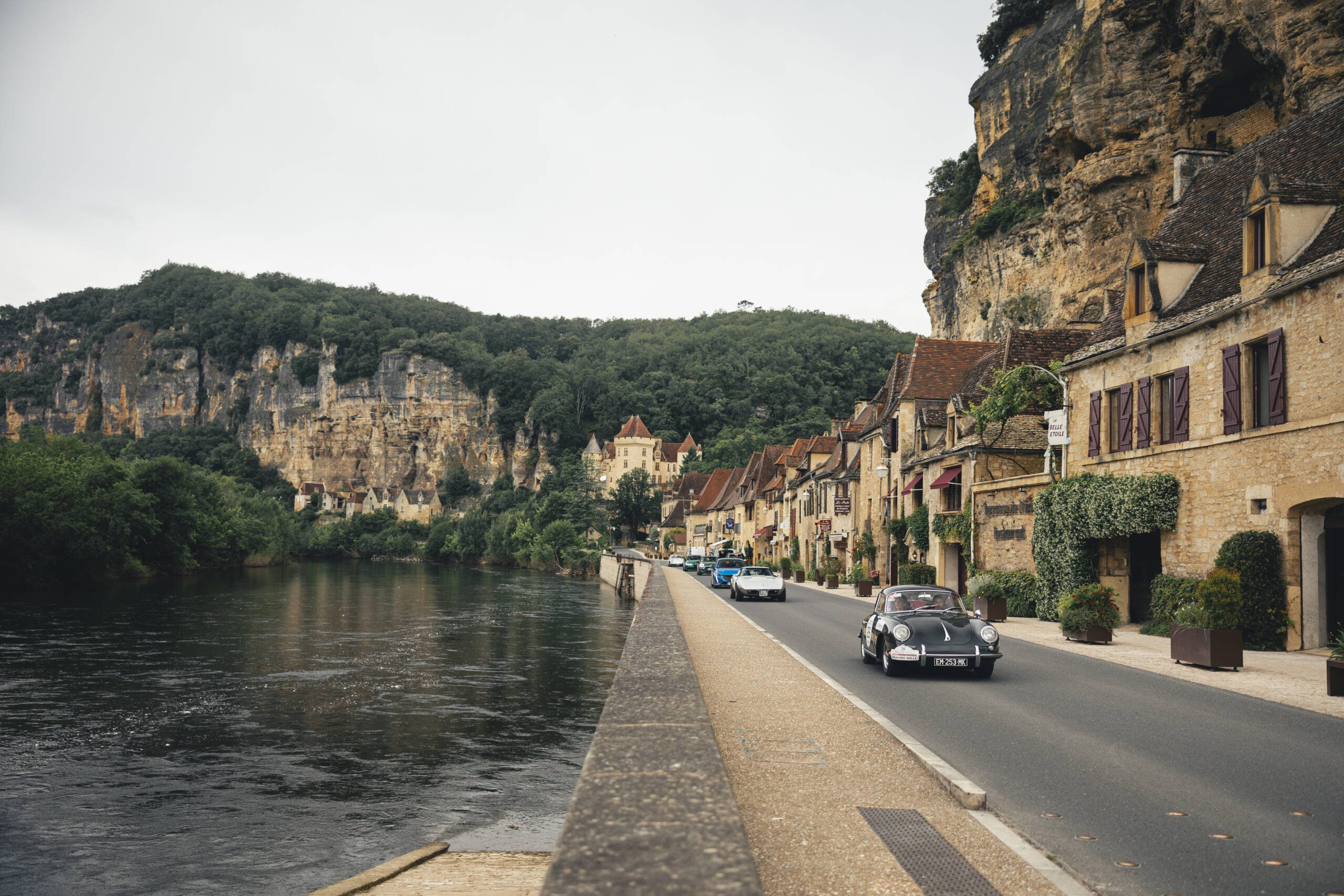
The scenic route towards Carcassonne took us through little villages along rivers and narrow routes
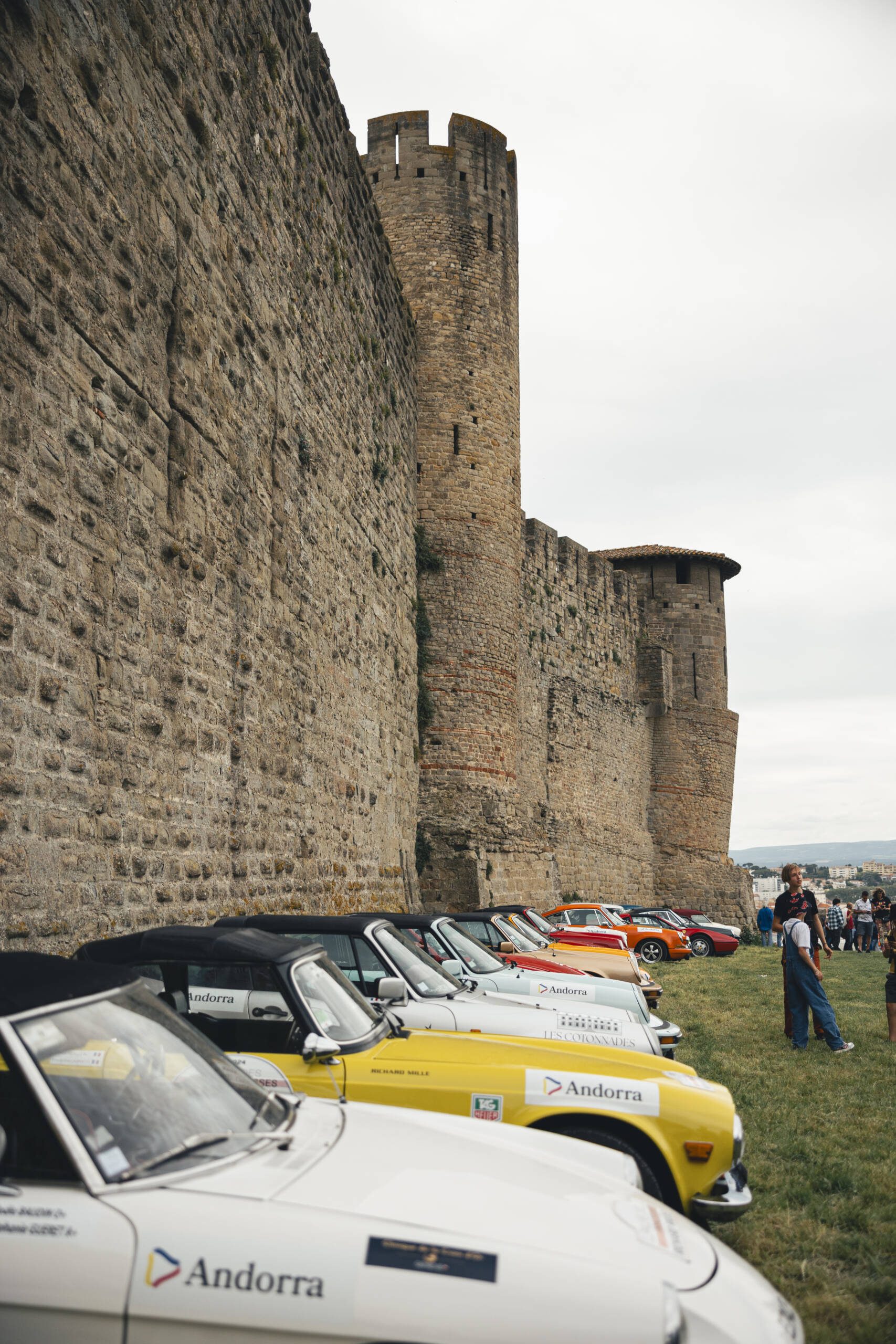
The medieval fortress of Carcassonne is a UNESCO World Heritage site
Race Day 5 – Alpine Routes of Andorra and Prize Ceremony
A mountainous finale awaited us. The last day took us along misty mountain routes towards the Pyrenees to Andorra. The routes up the mountains were quite foggy and you had to be very careful as the sight was not the best and there were some wild animals crossing the roads.
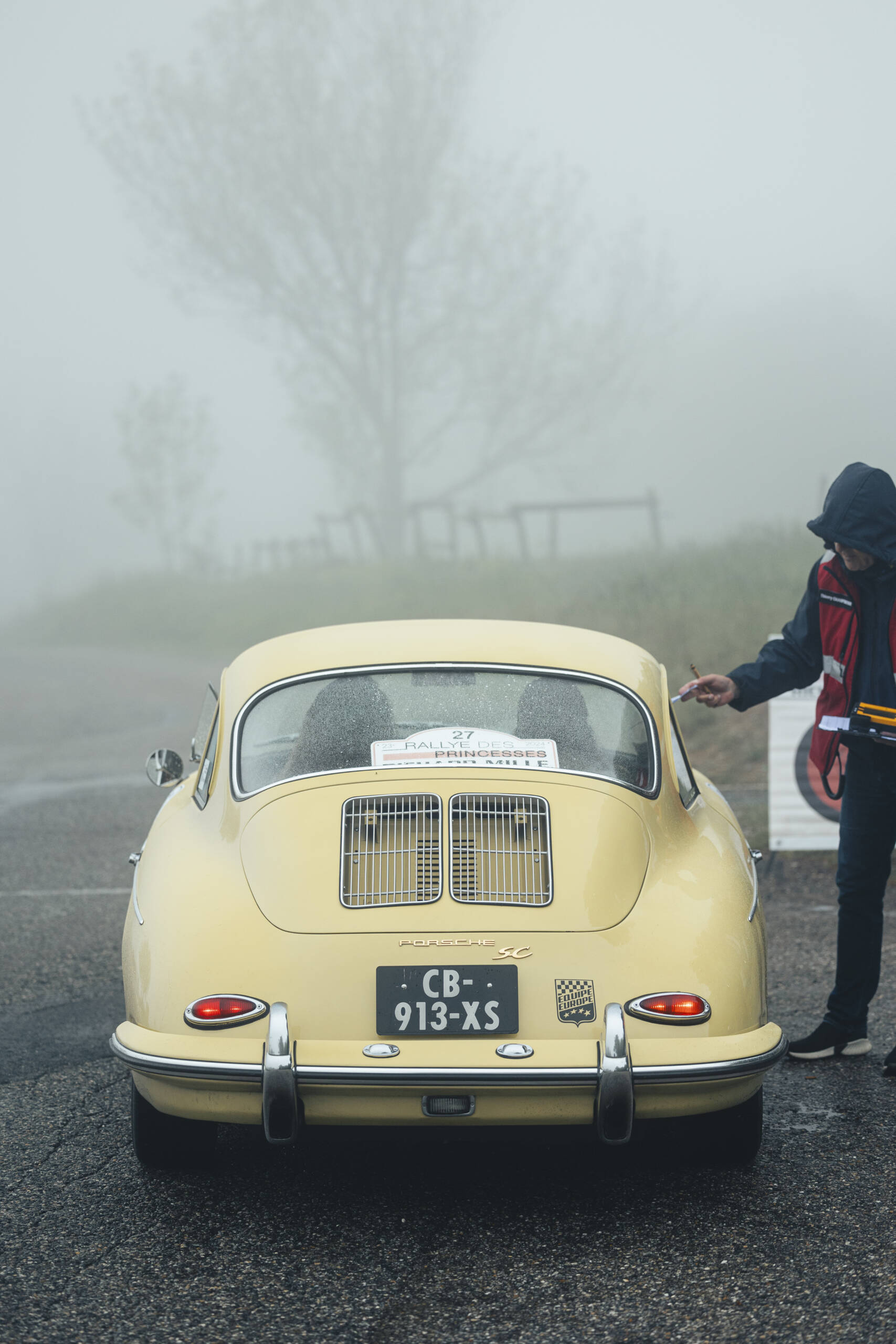
Our yellow Porsche 356 conquering the foggy roads towards the mountains
Occasionally, patches of the fog parted, offering brief, breathtaking glimpses of the valley far below, where dark green forests and meandering rivers appeared like miniatures before they were swallowed up again by the mist.
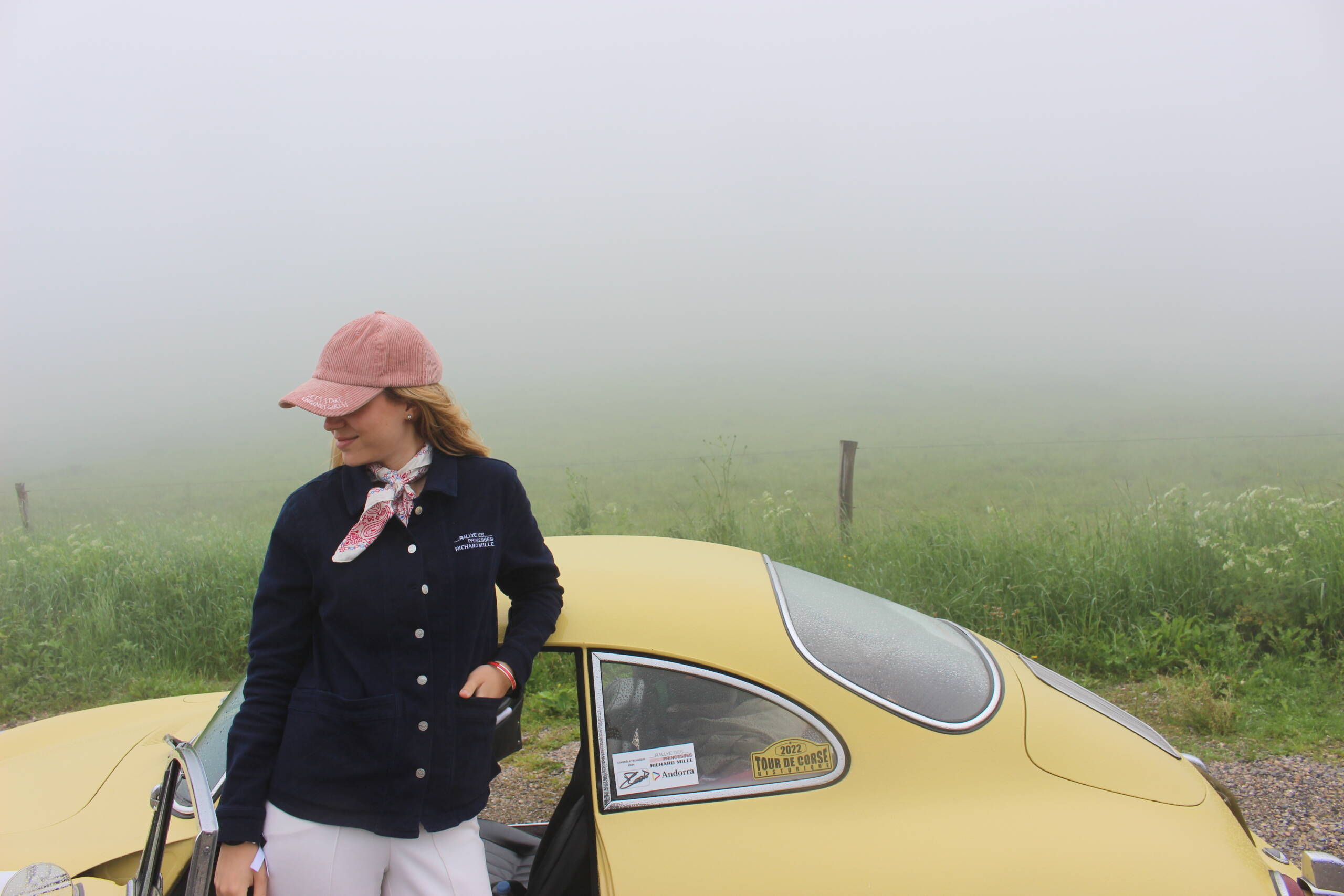
Fabienne Amez-Droz with the Rallye des Princesses merch: A cap, a jacket and a foulard
After crossing the border of Andorra, we drove up and down the mountain passes until lunchtime. Our final lunch stop was an idyllic picnic set up featuring specialities from Andorra, which are a mix between French and Spanish cuisine.
The final leg of the journey to Andorra is nothing short of spectacular, with steep climbs, rugged mountain passes, and panoramic vistas – a fitting finale for the adventure.
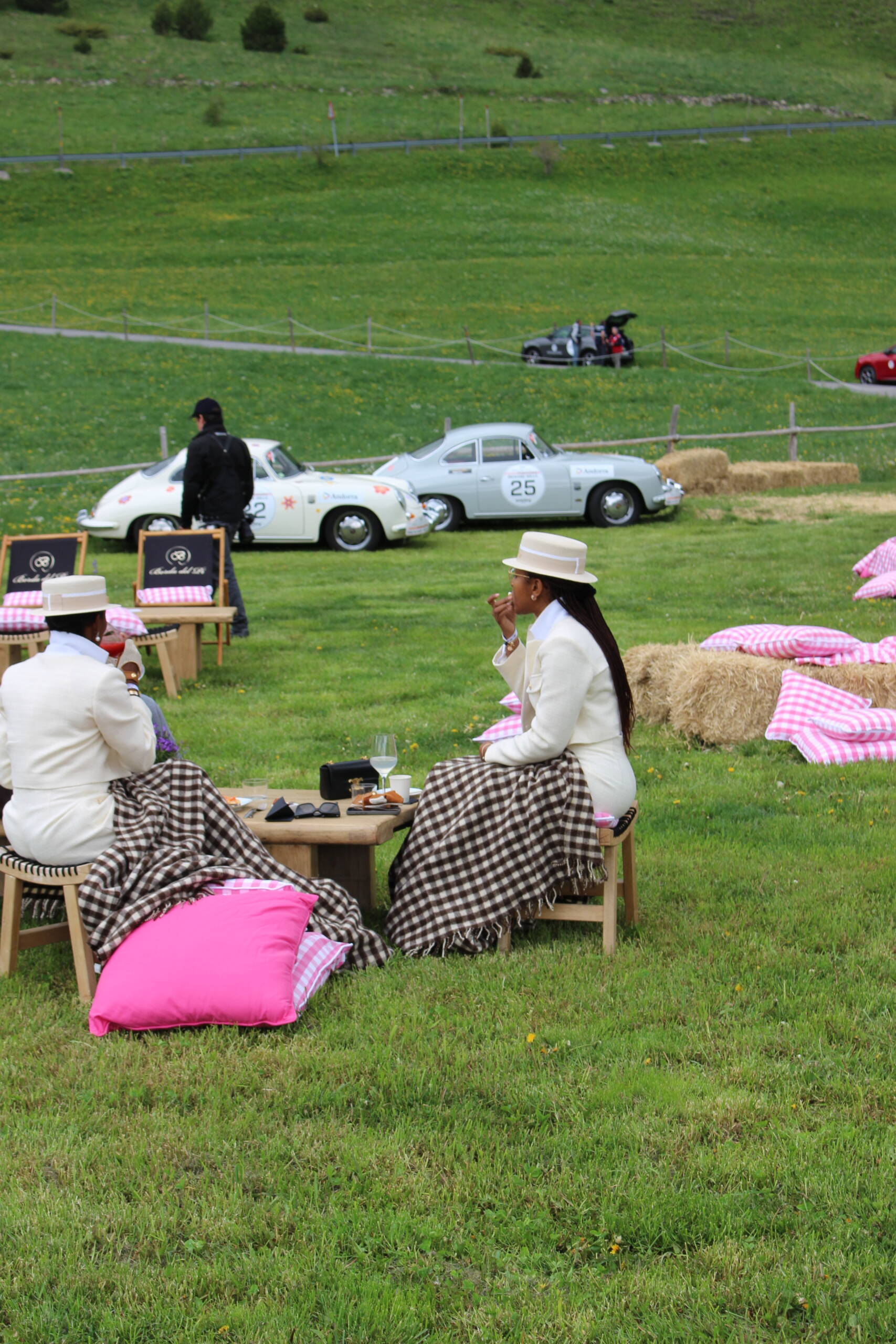
Lunch was served at the top of a mountain with many specialities from Andorra, which were interesting to try
After 5 days and countless hours of thrilling driving, we finally crossed the finish line and received our well-deserved champagne to celebrate plus a medal with the whole route engraved. We did it!
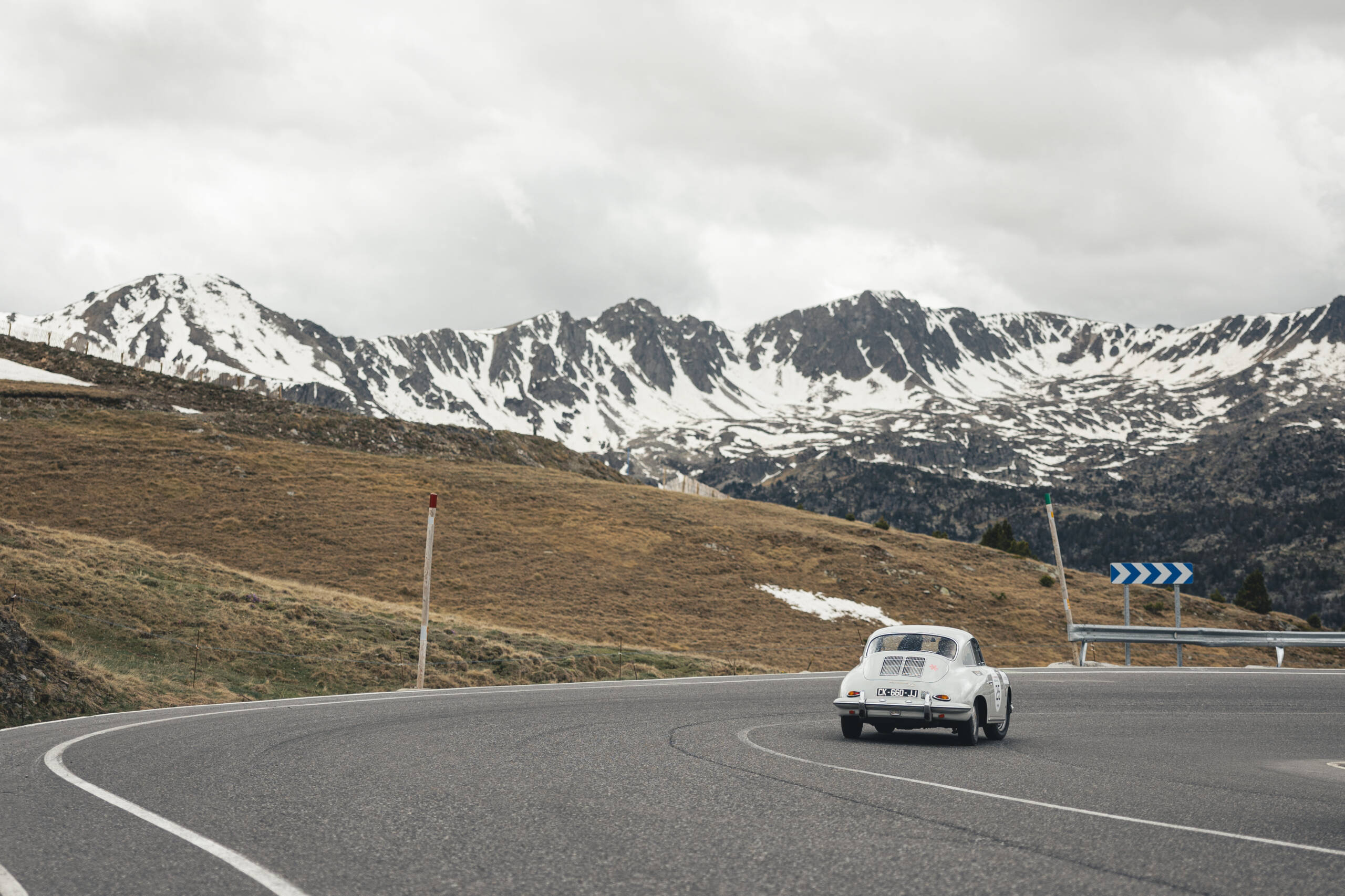
The last race day was filled with Andorras mountain passes and we had a picnic set up for us on the top of a mountain
The evening wrapped up with a big awards ceremony, and by the time we assembled at our final venue of the rally, an alpine celebration was awaiting our company. The cool evening mountain air shifted us inside where after a moving speech by Patrick Peter, we sat down at our tables, discussing the rally’s most challenging and exciting moments.
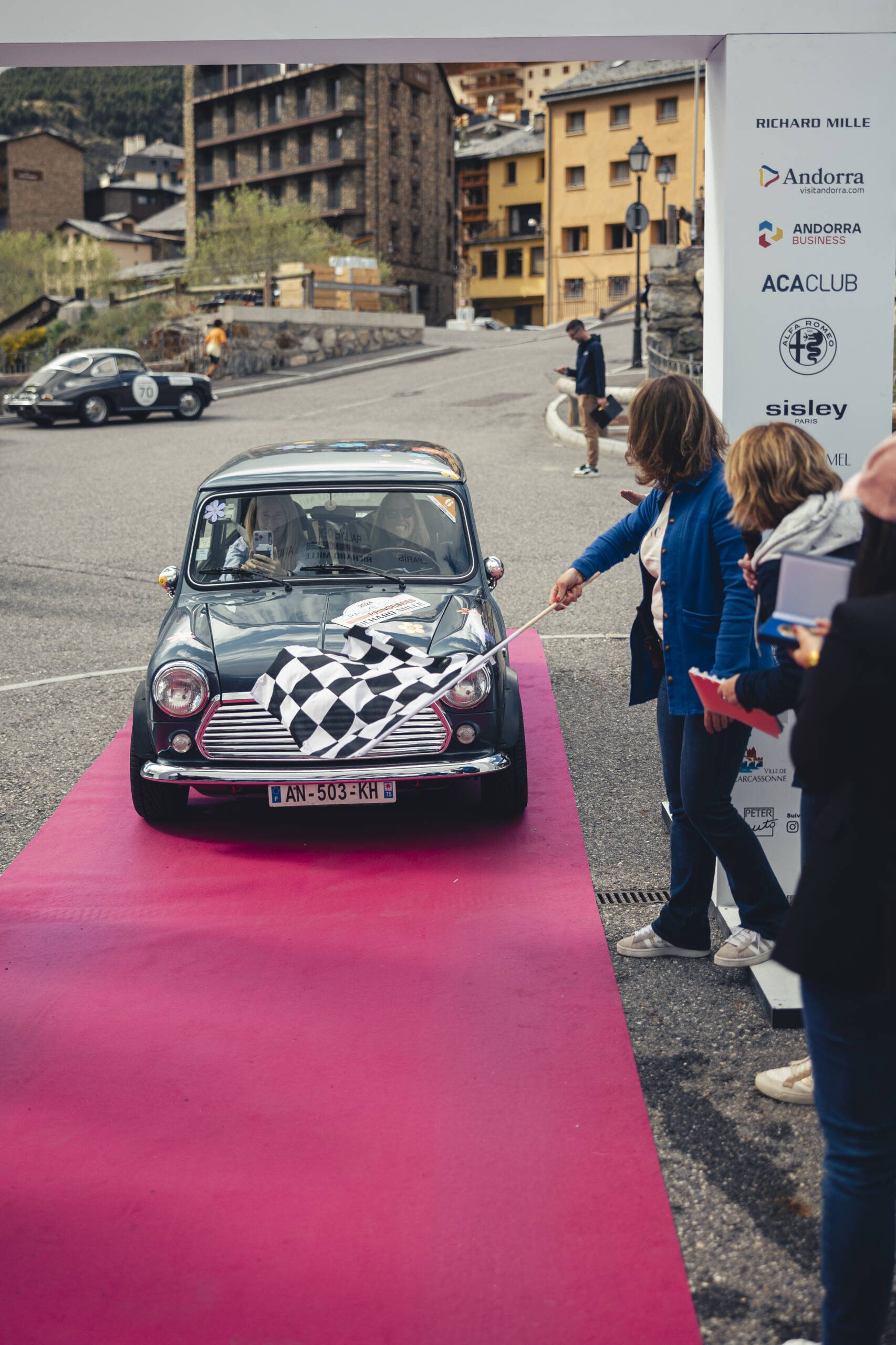
The finish line in Andorra was next to a luxury chalet-style hotel, where we celebrated the end of the rally
We celebrated and danced until the early hours of the morning with all the participants of the 60 teams, and as the night began to wind down, all drivers exchanged contact details and promises to meet at future rallies, still basking in the memories of winding roads, breathtaking views, and the camaraderie that only a journey like the Rallye des Princesses can provide.
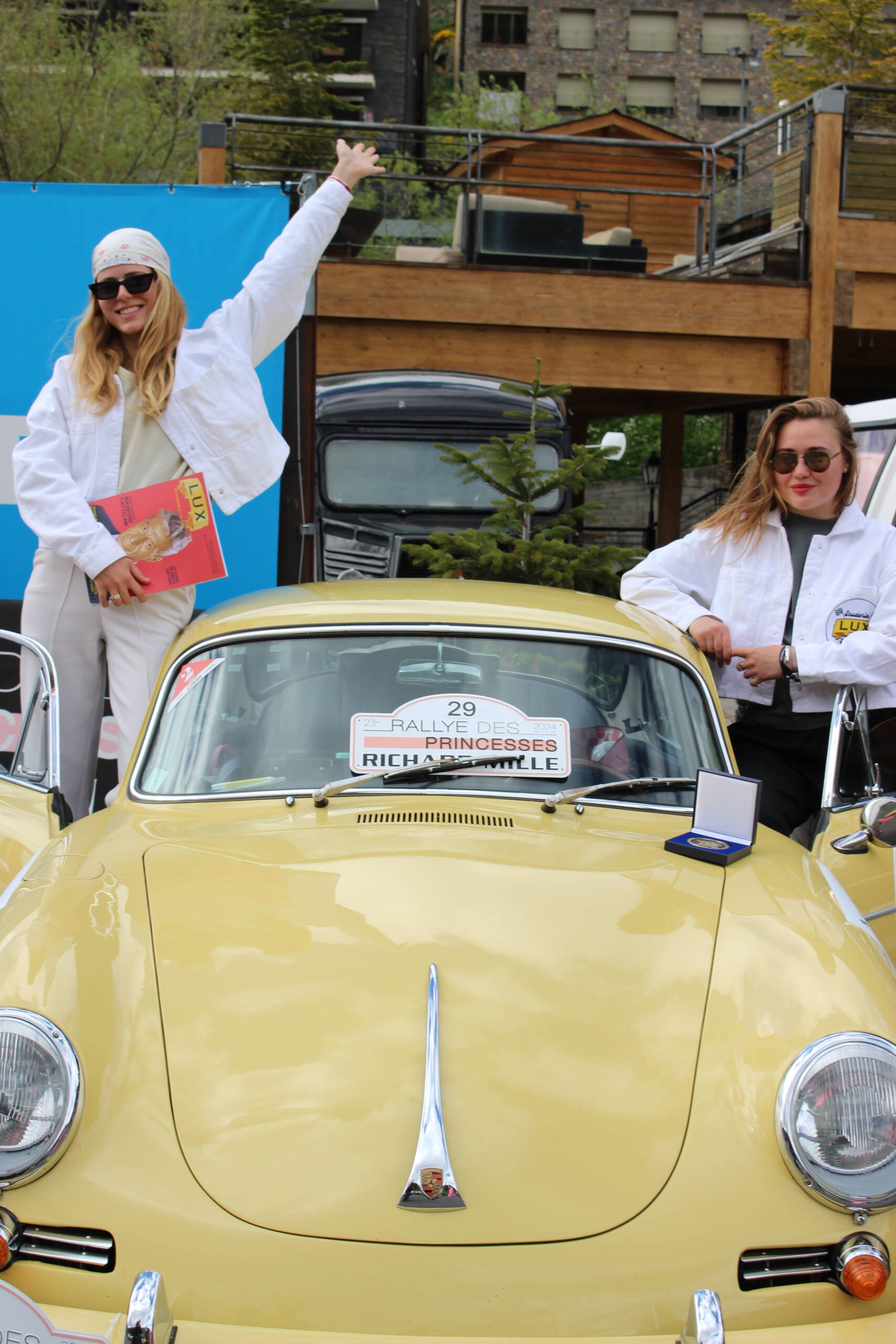
At the finish line in Andorra, Fabienne Amez-Droz and Masha Nosova received a glass of champagne to celebrate and a medal with the whole route from Paris to Andorra engraved
By the end of the rally, we had all grown together as close friends and wanted to keep driving. An extraordinary and incredible journey by Richard Mille.
Find out more: richardmille.com/events/rallye-des-princesses



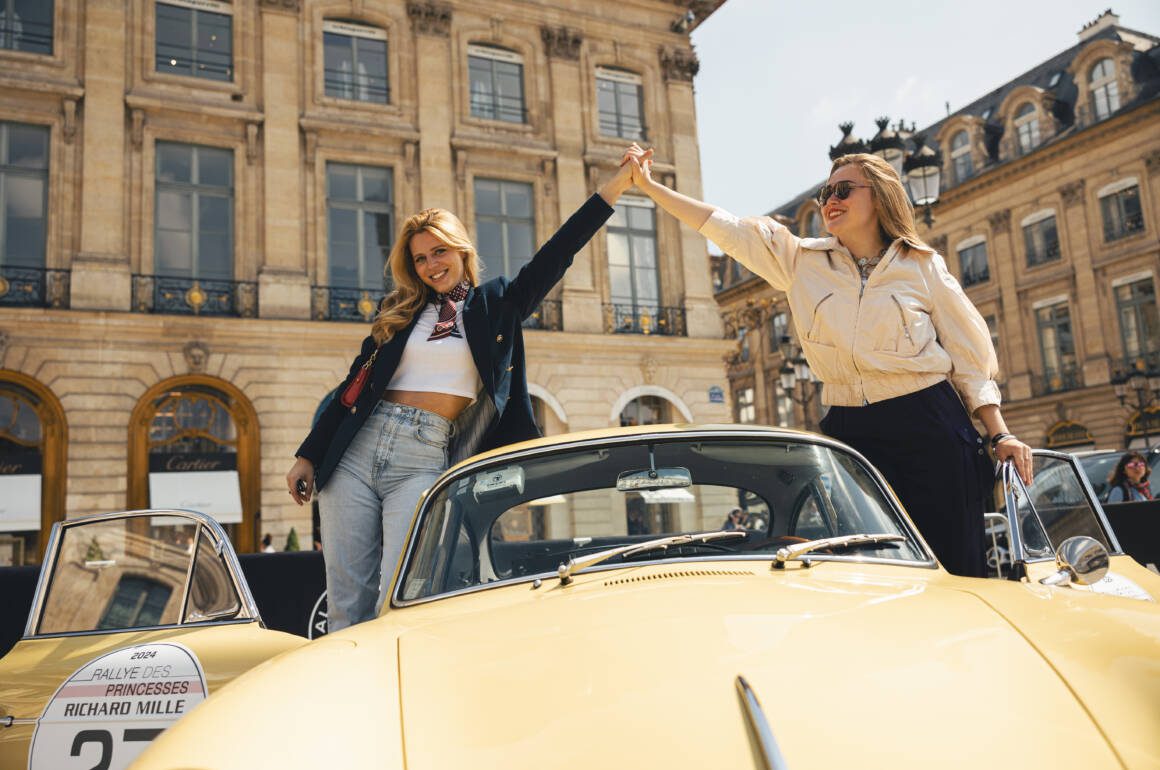
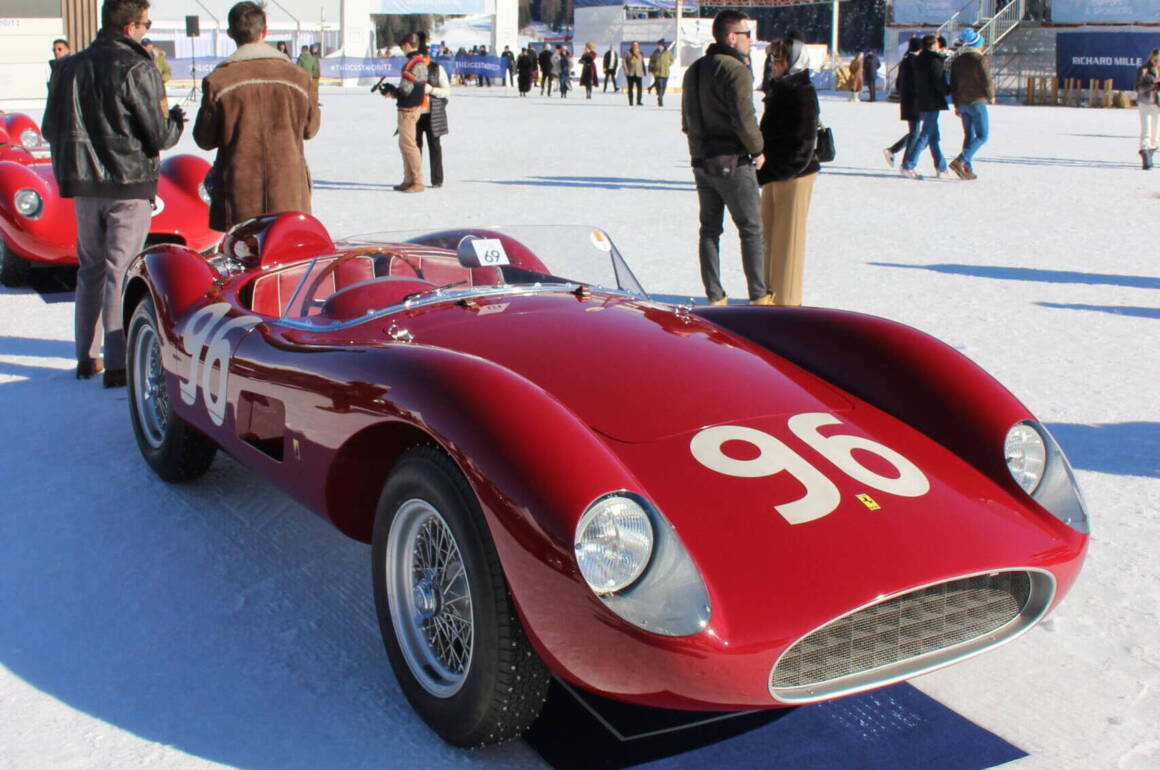
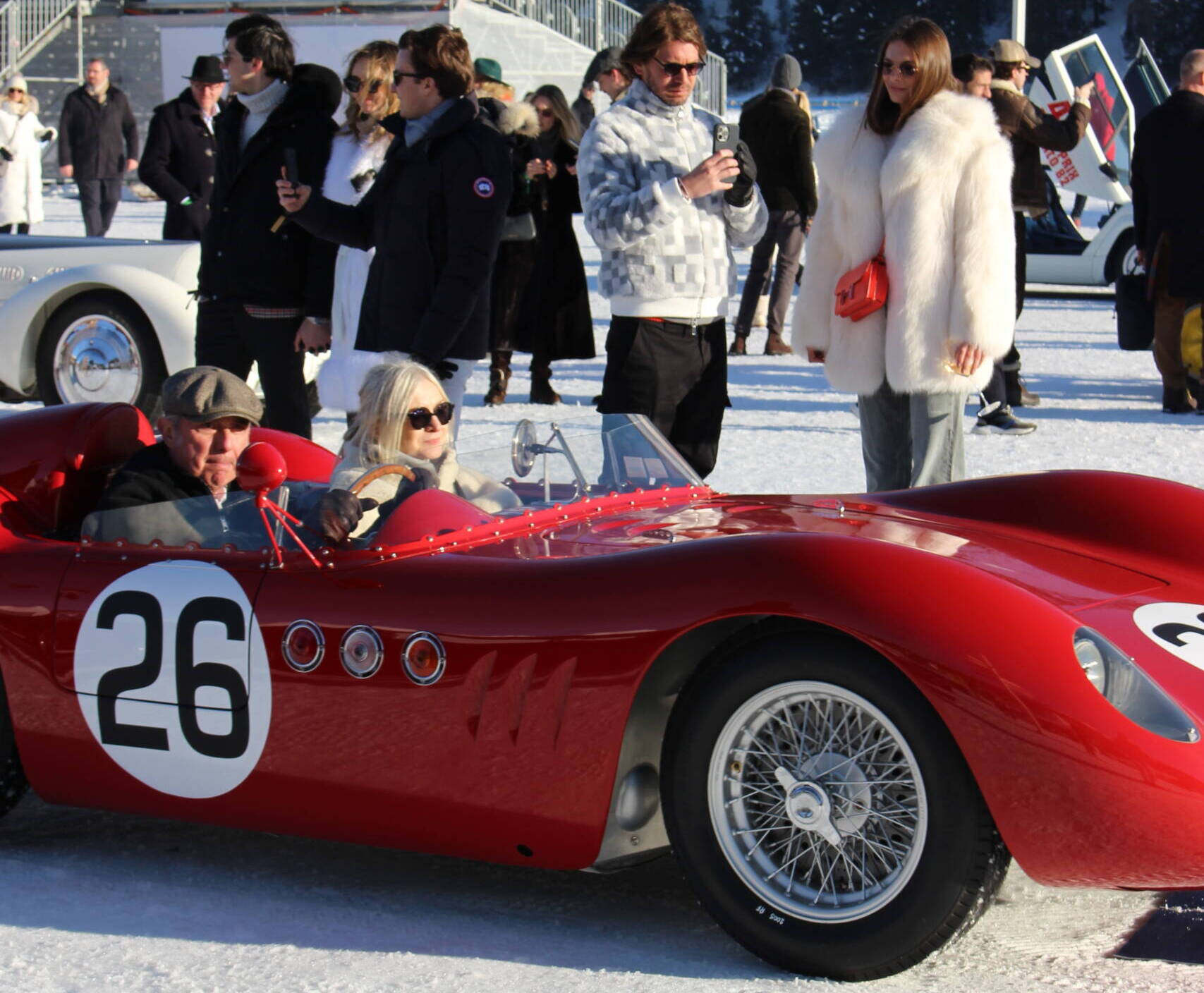
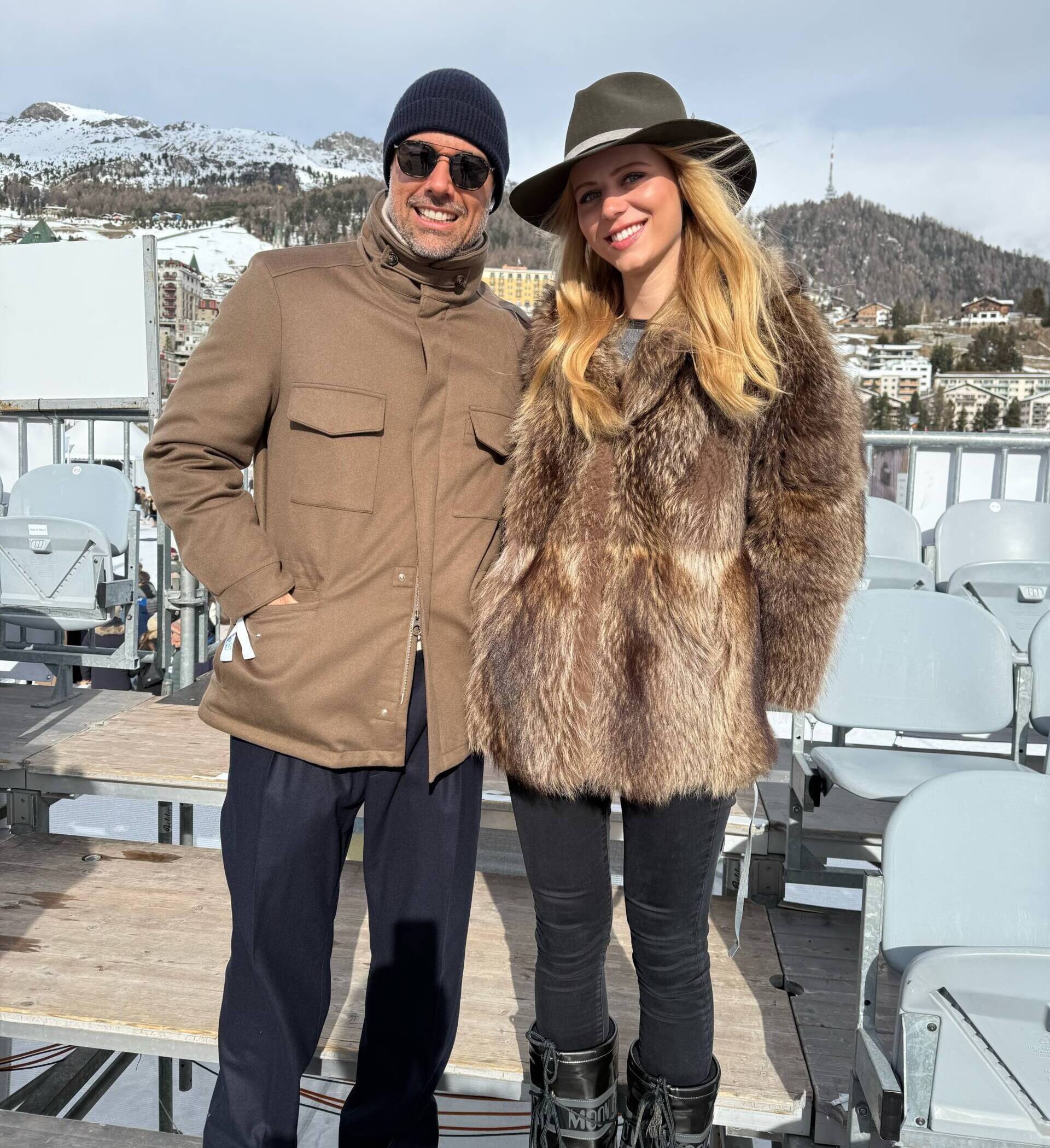
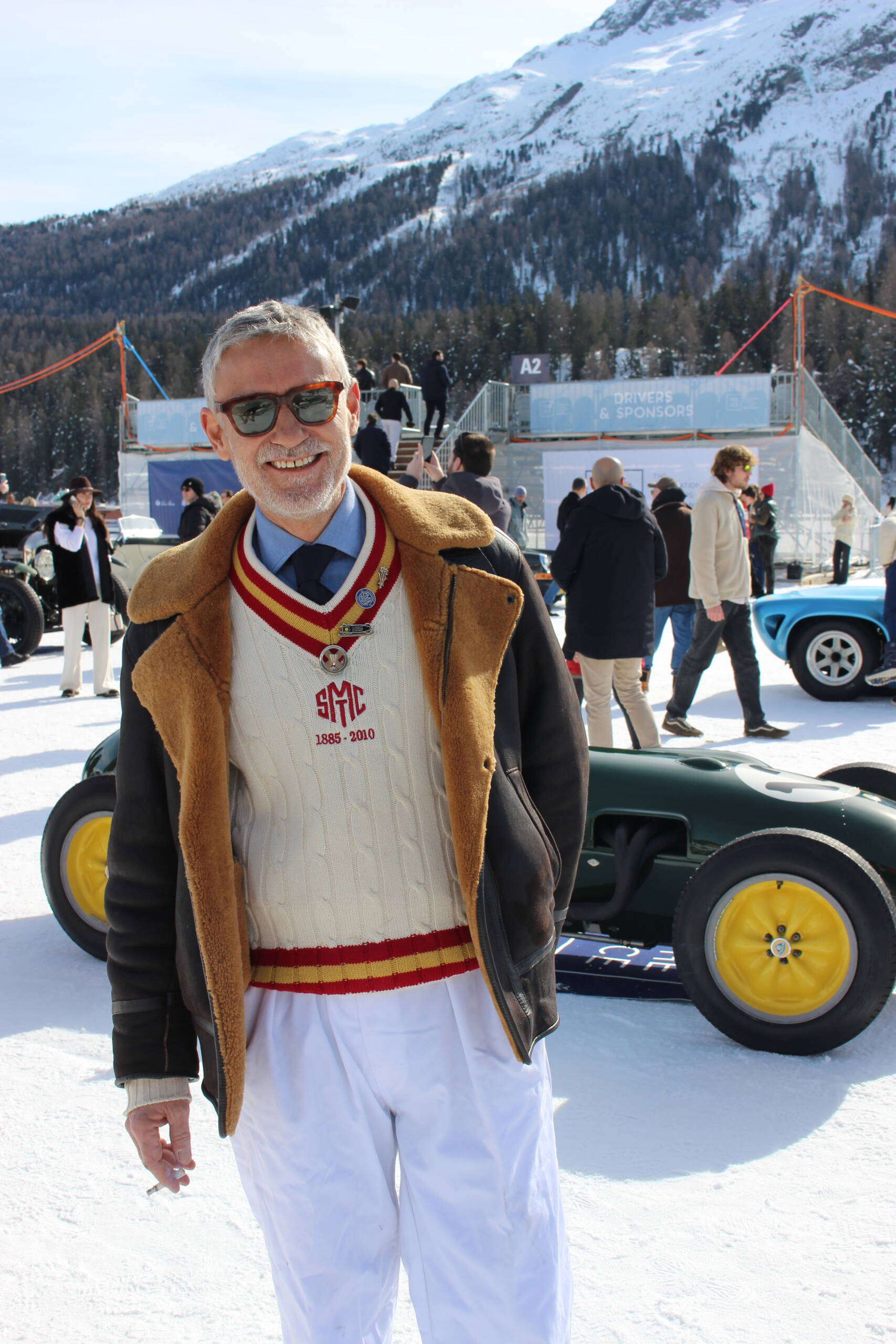
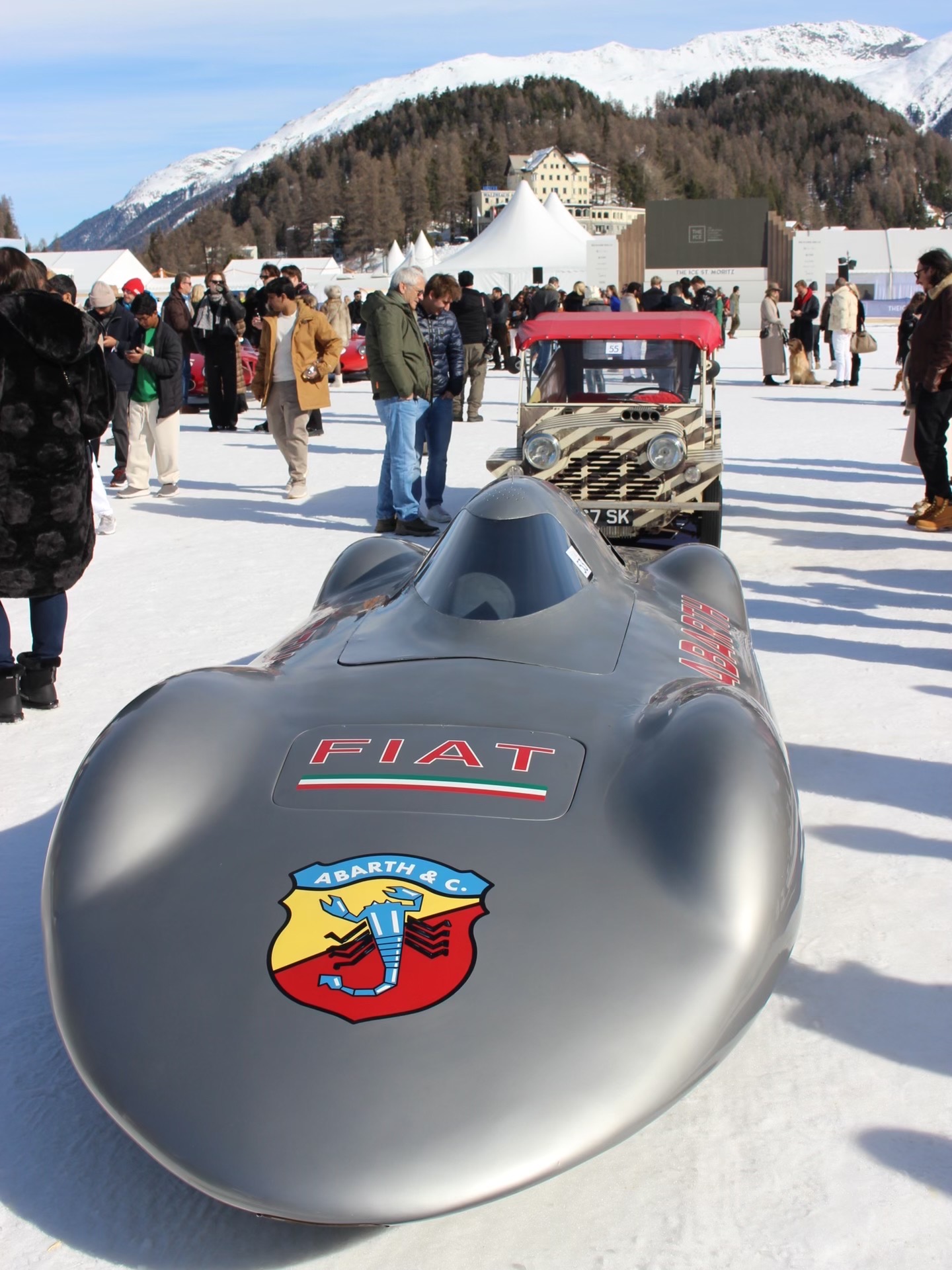
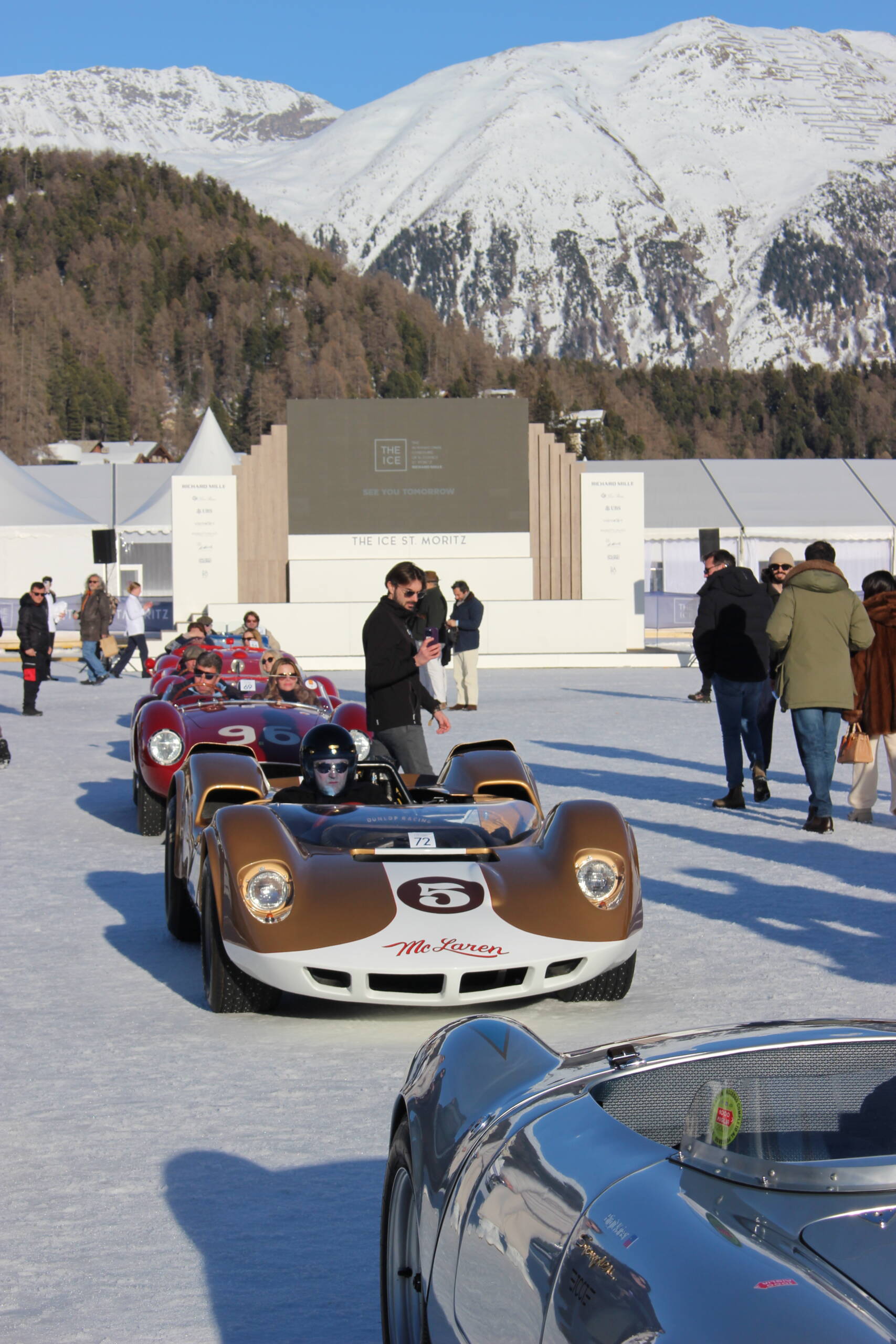

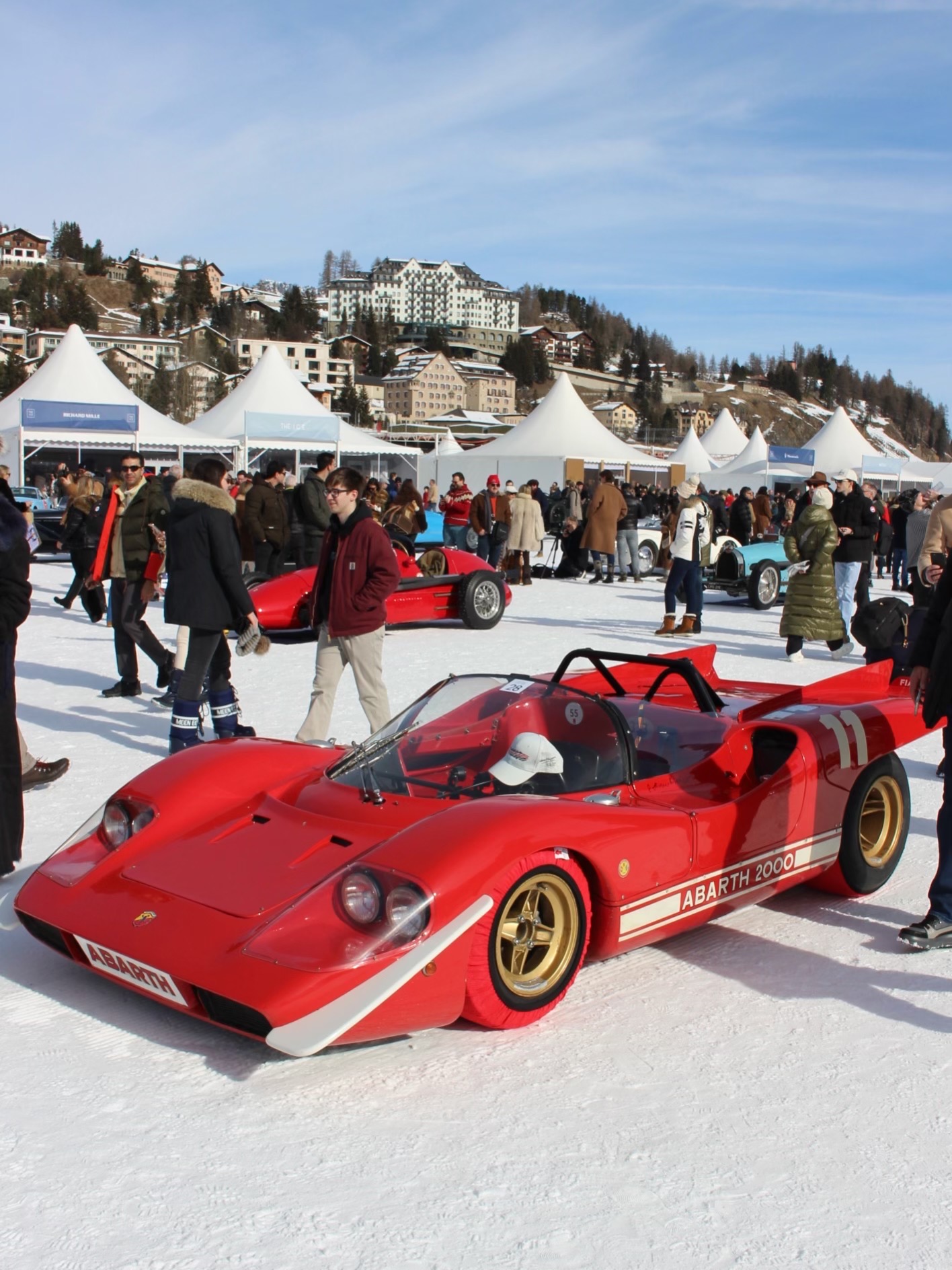
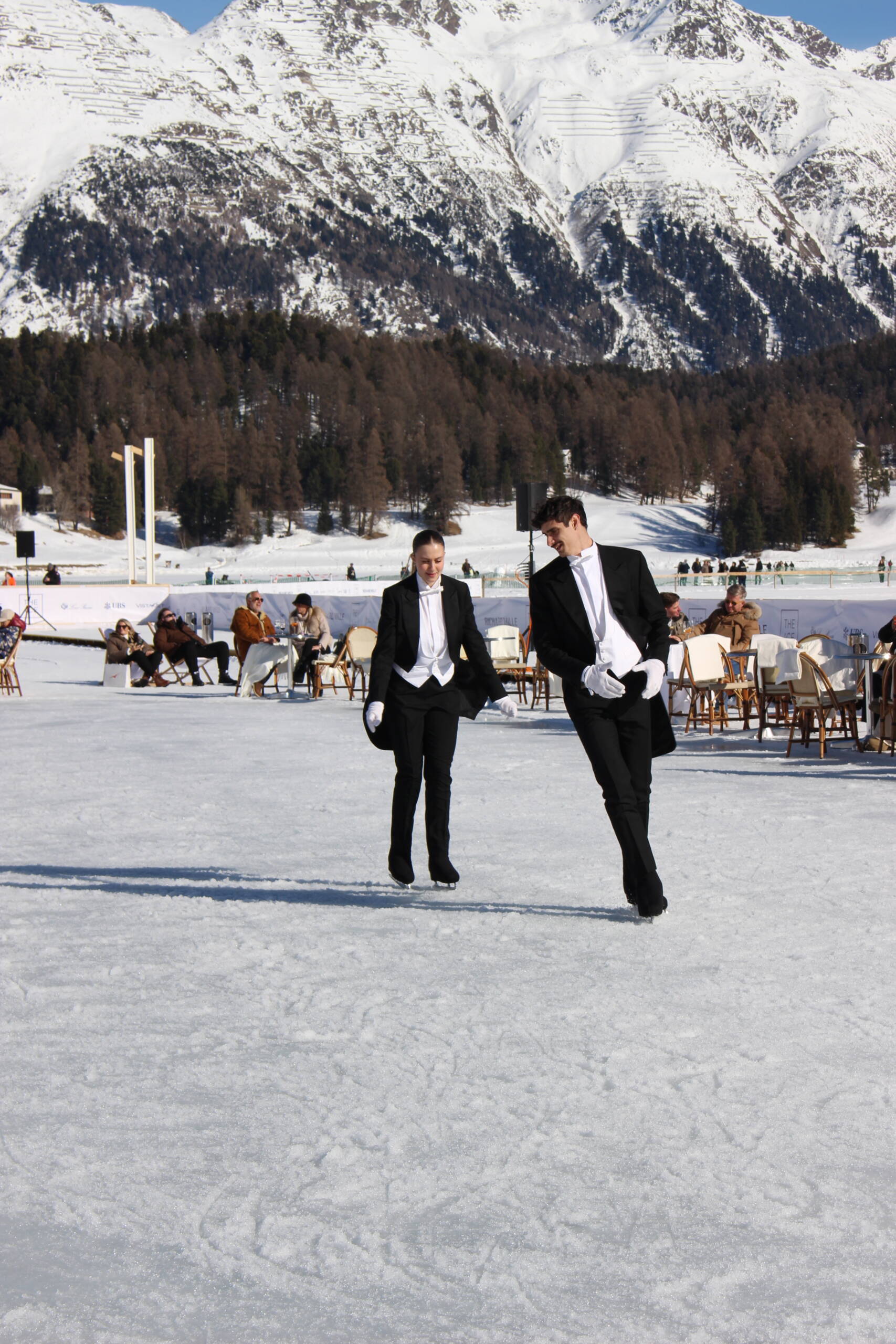


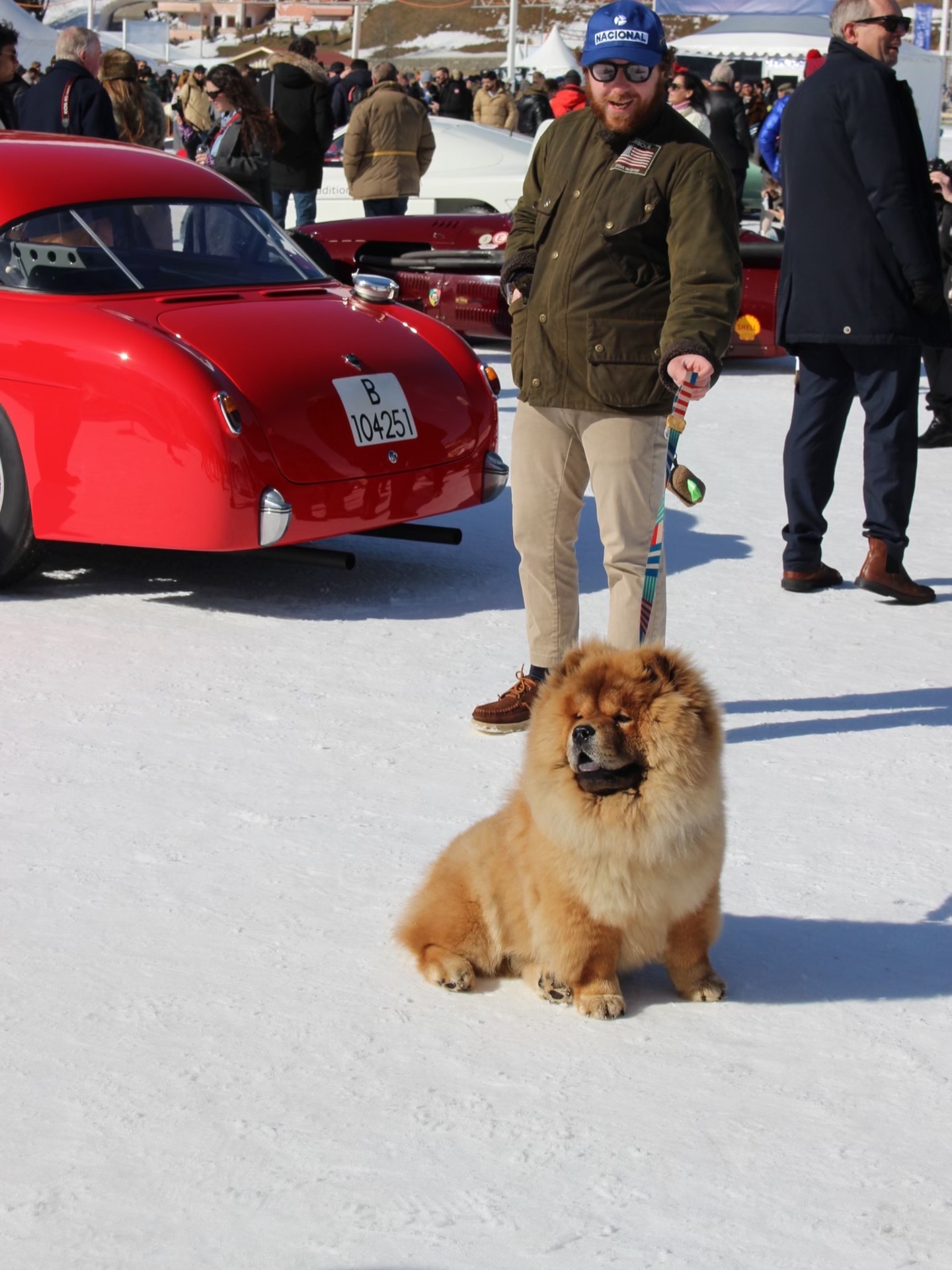
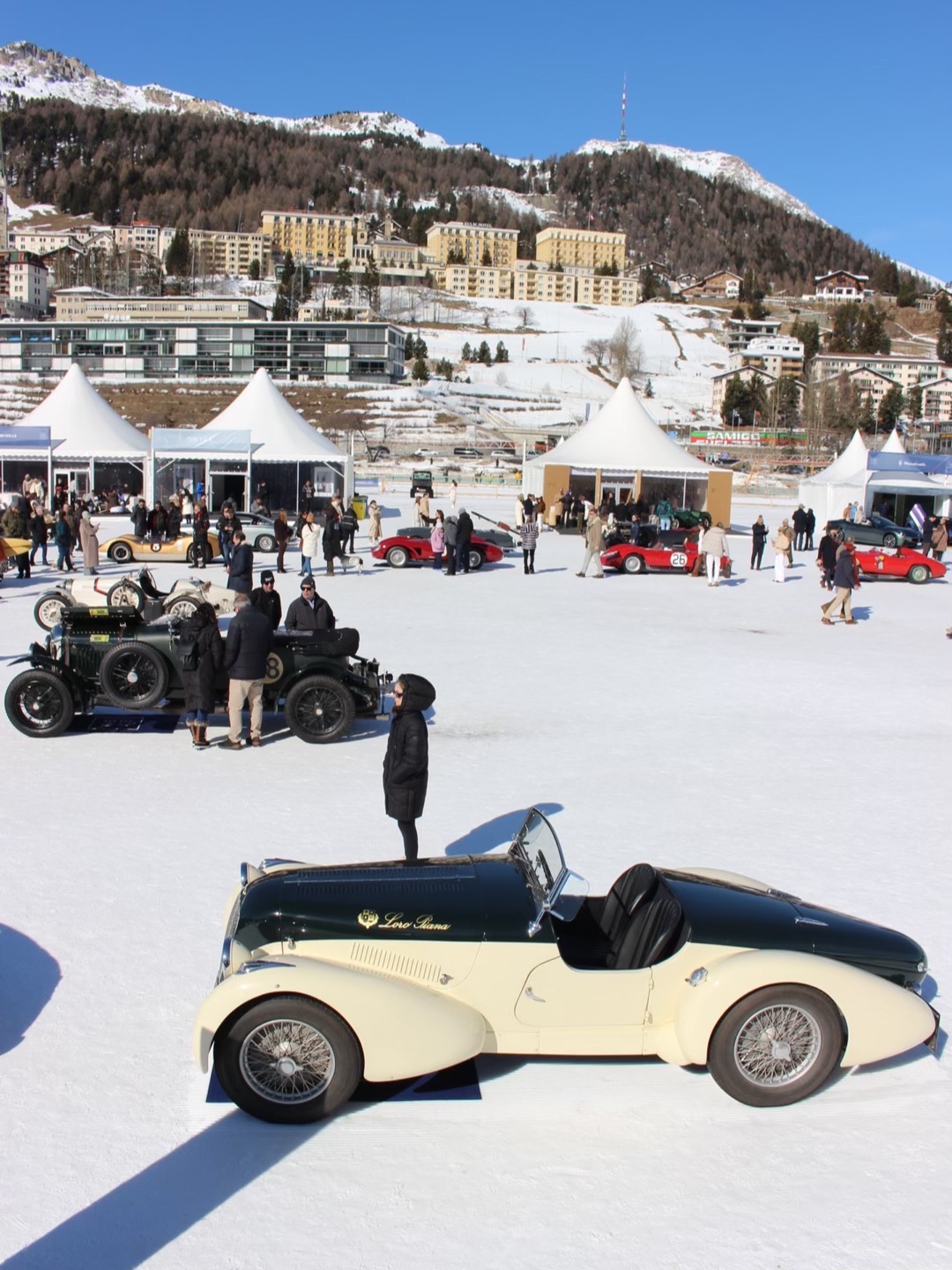
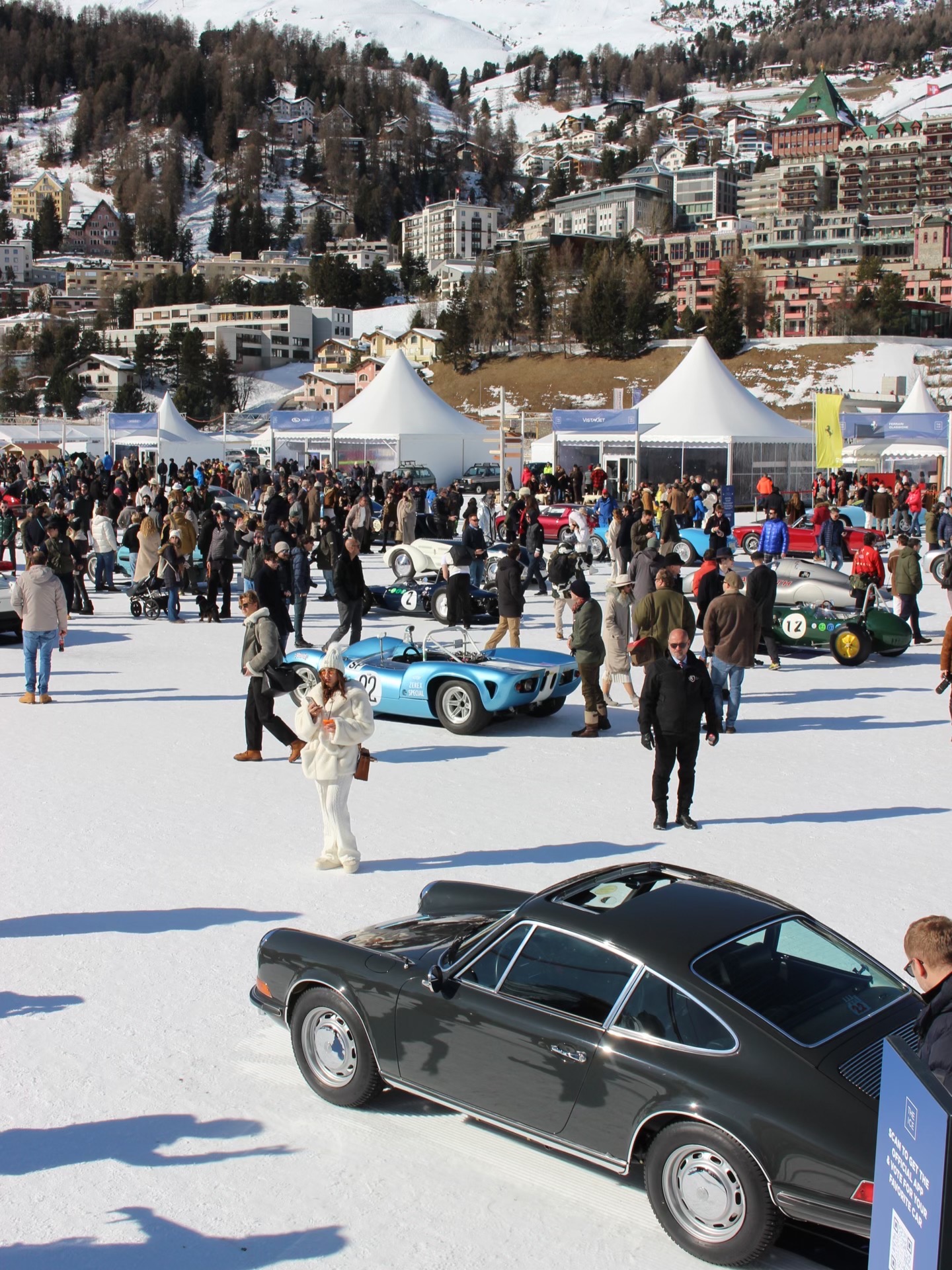
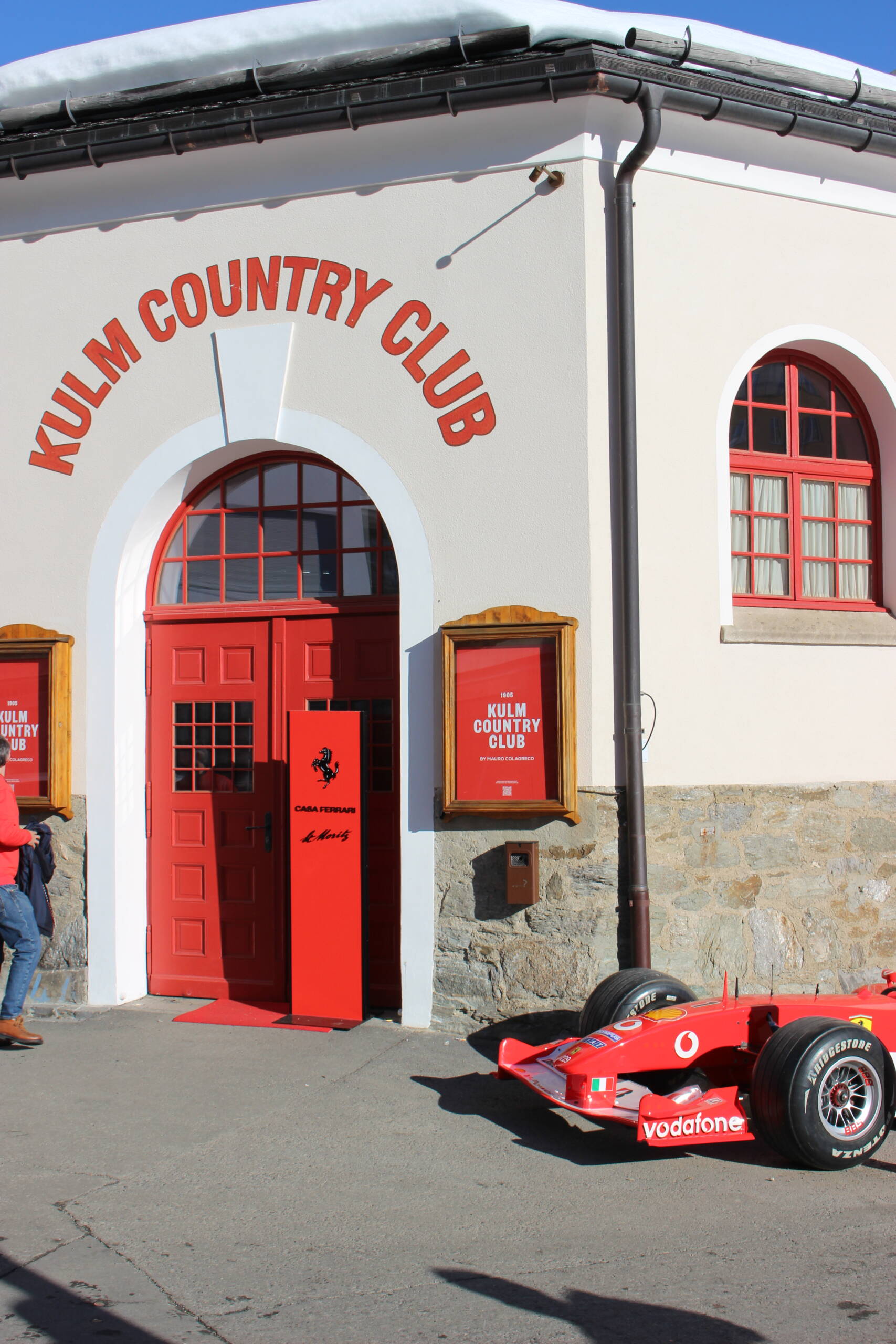



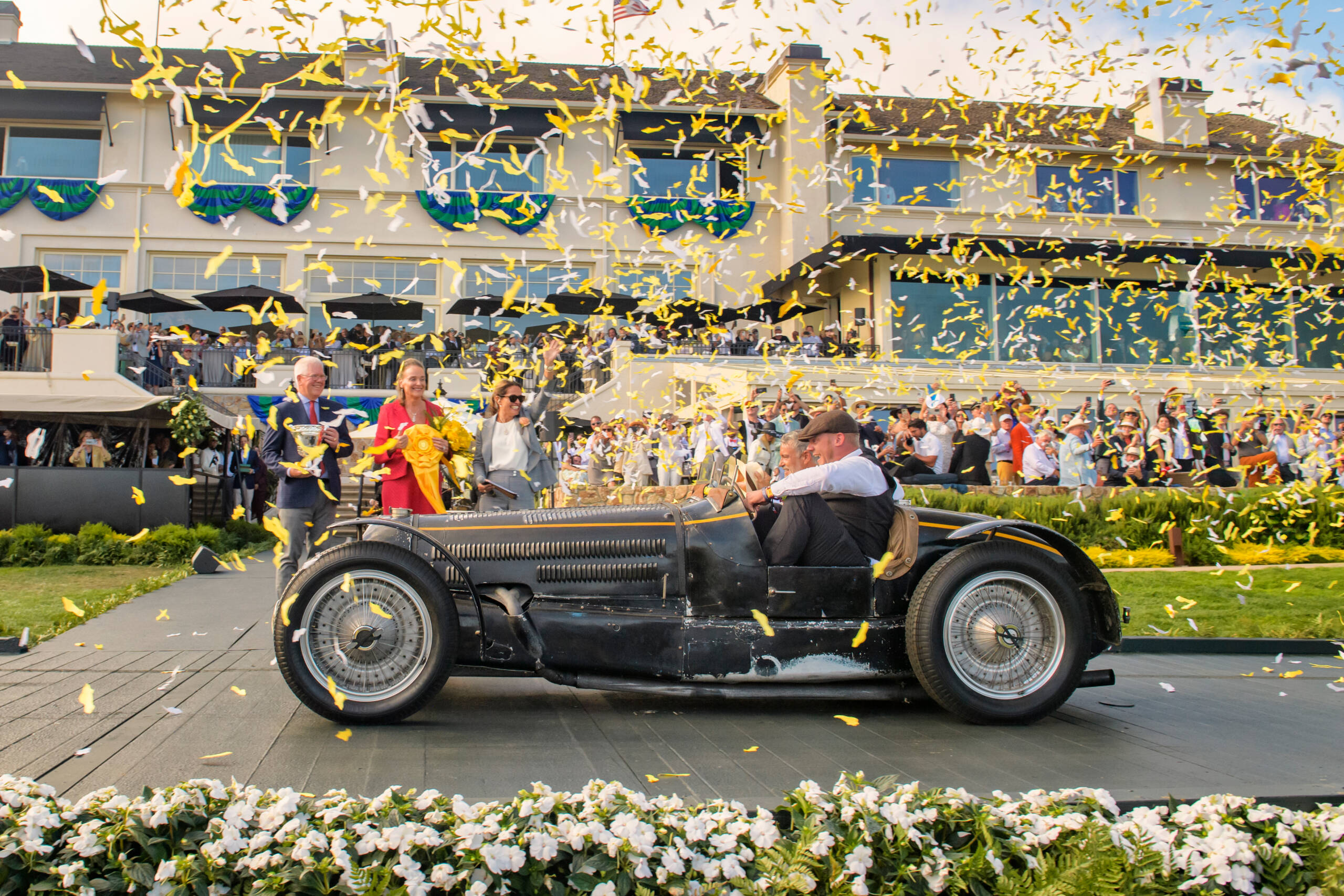
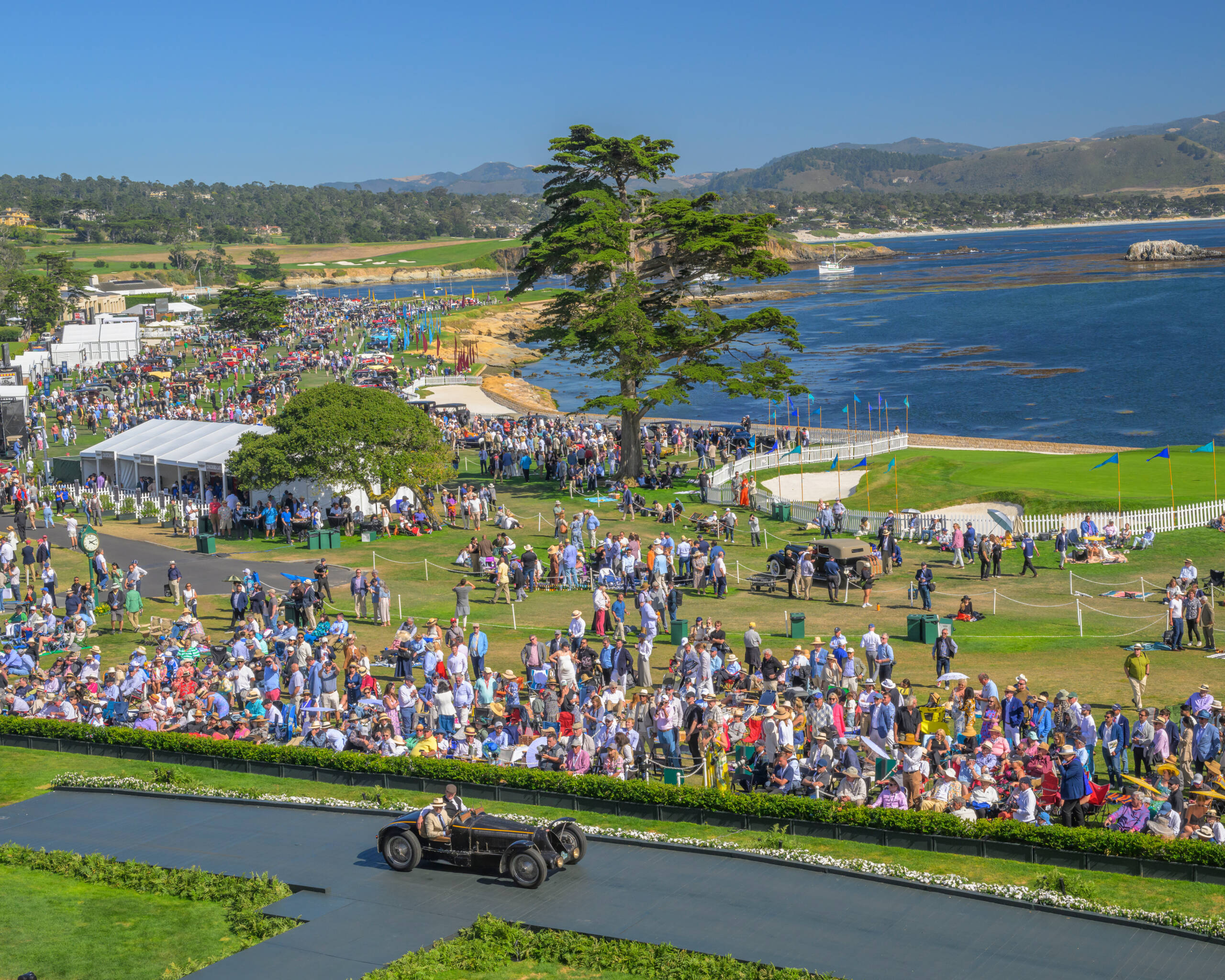
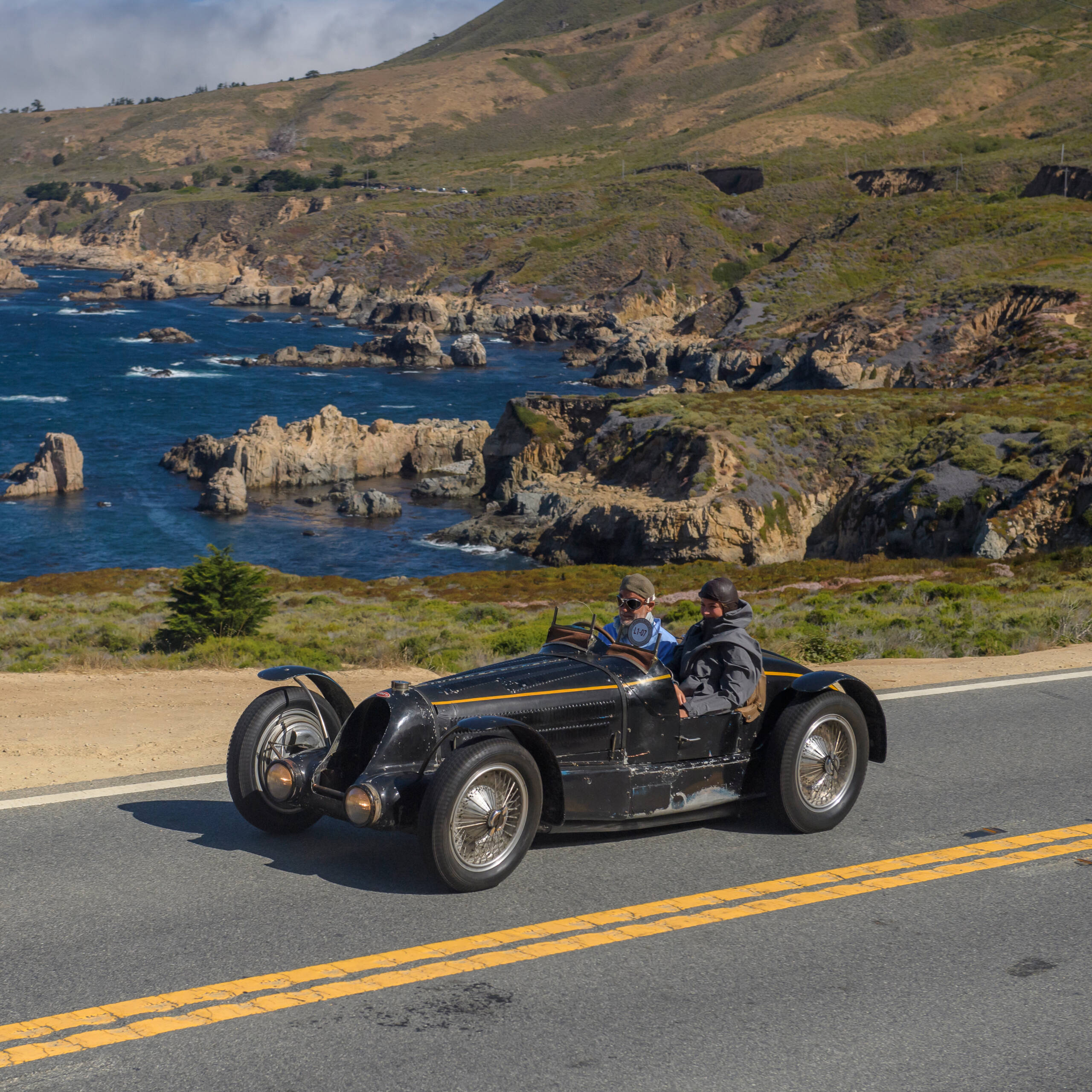
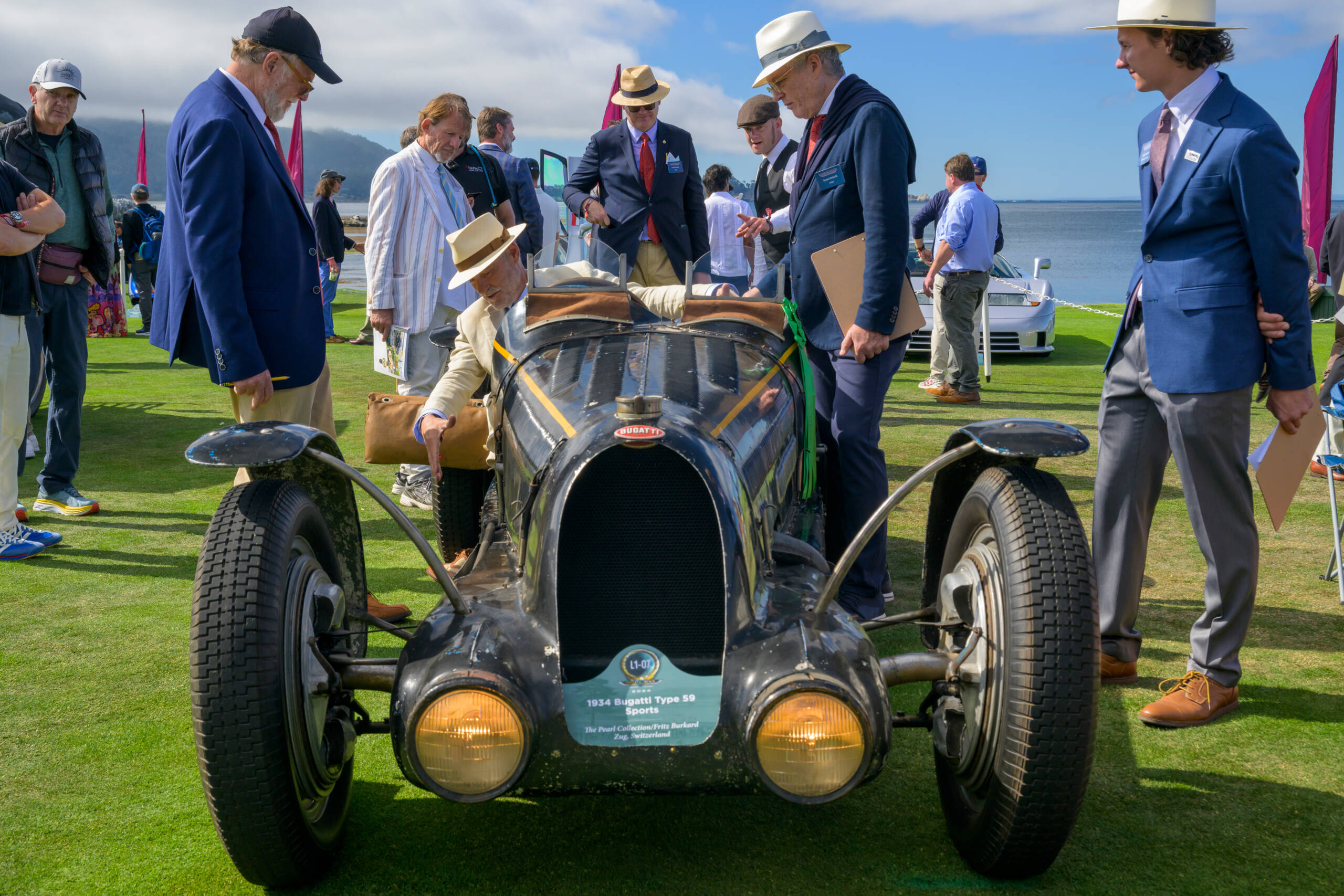
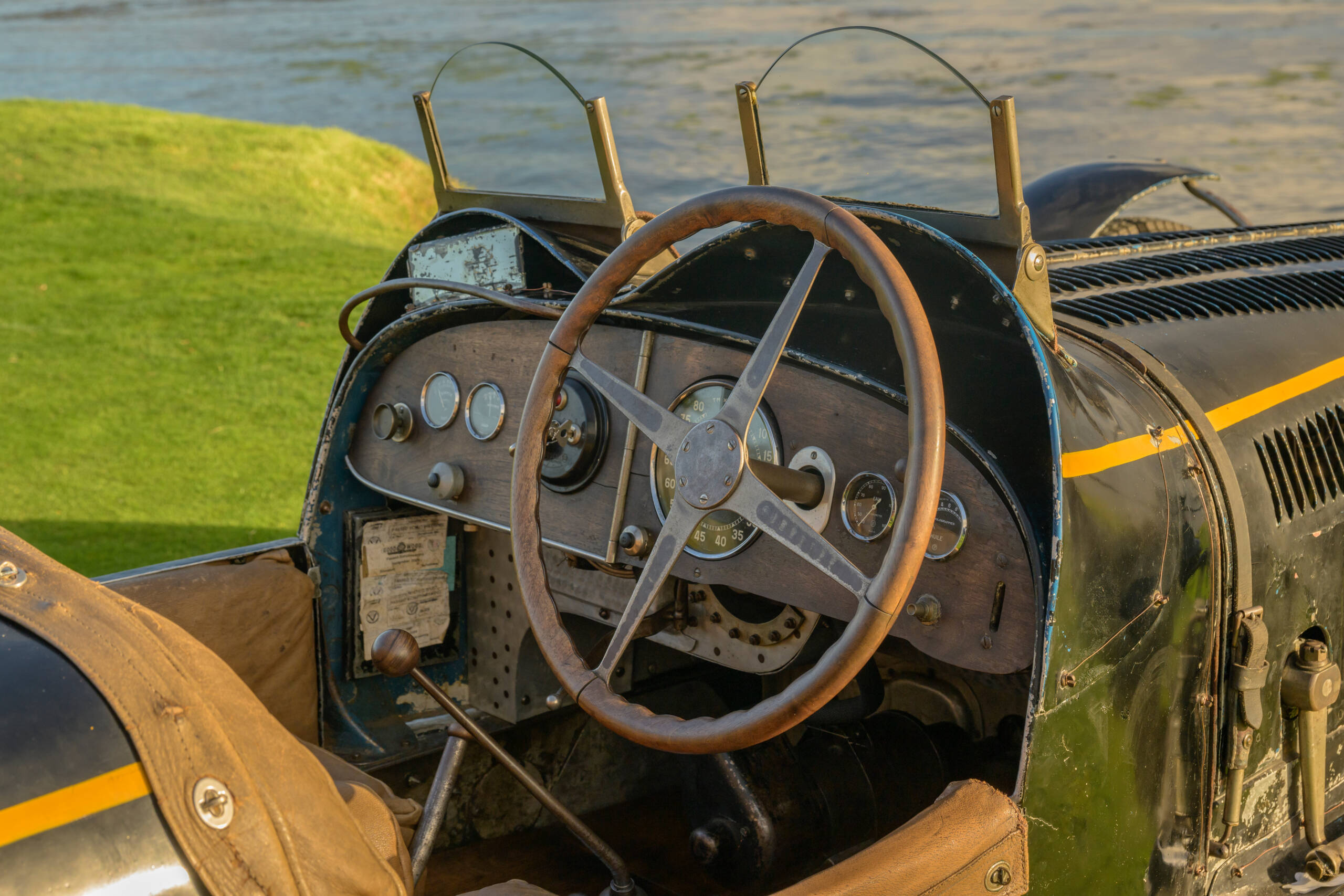
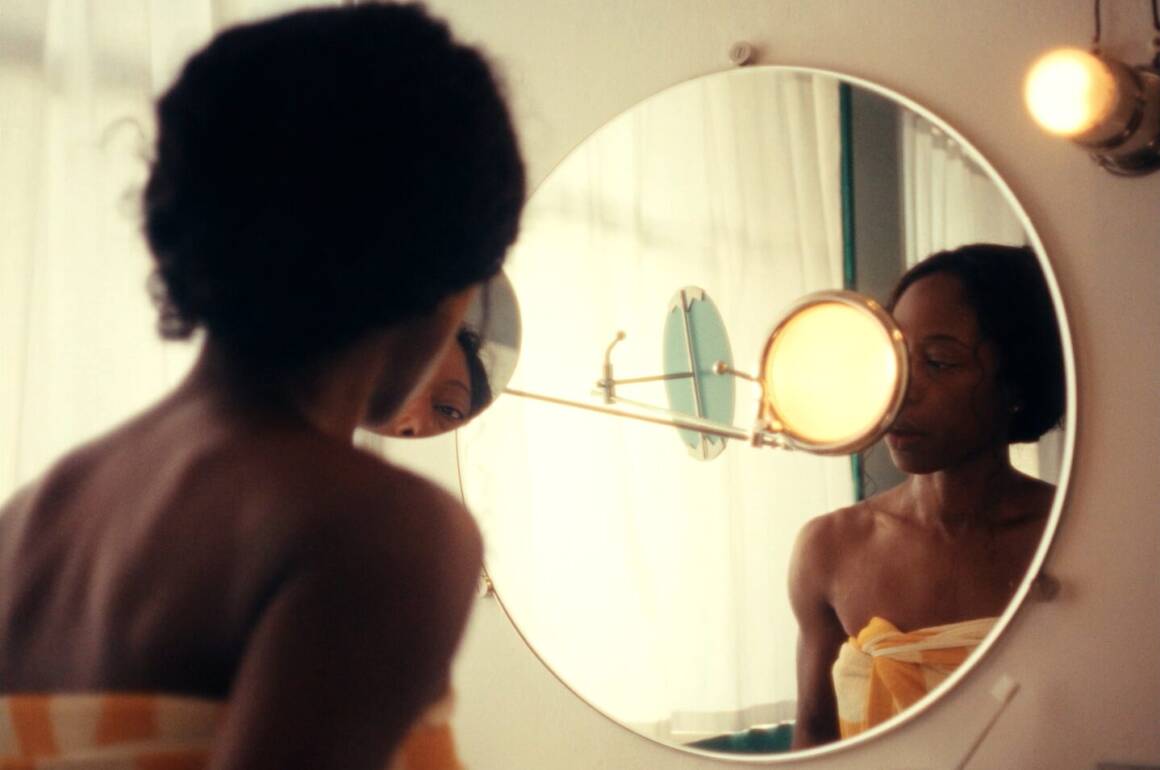
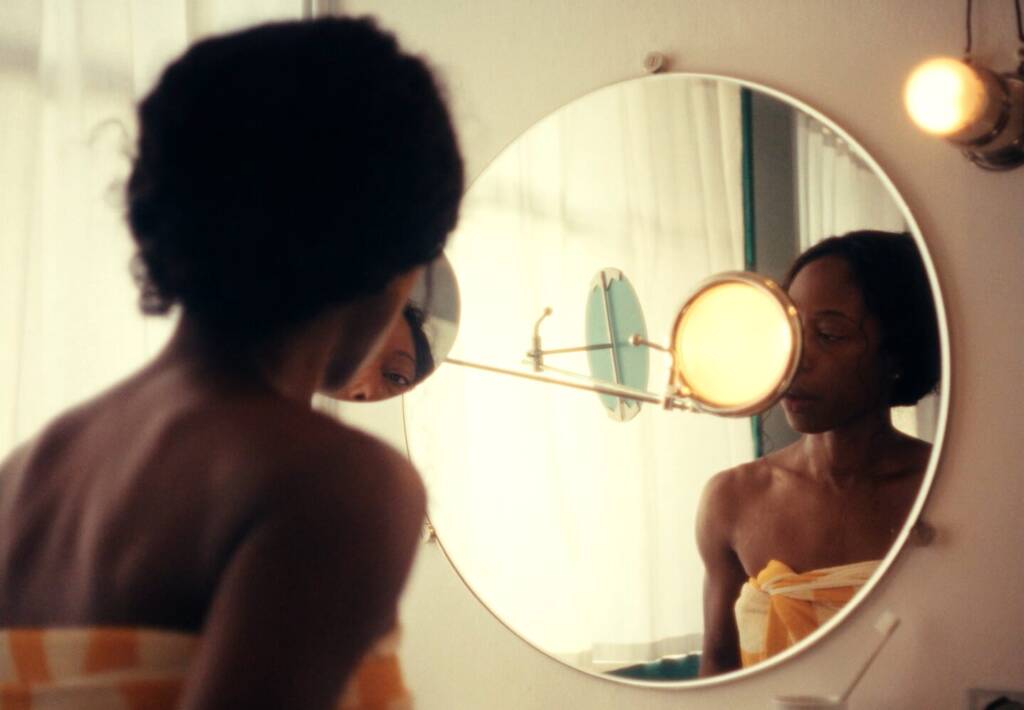
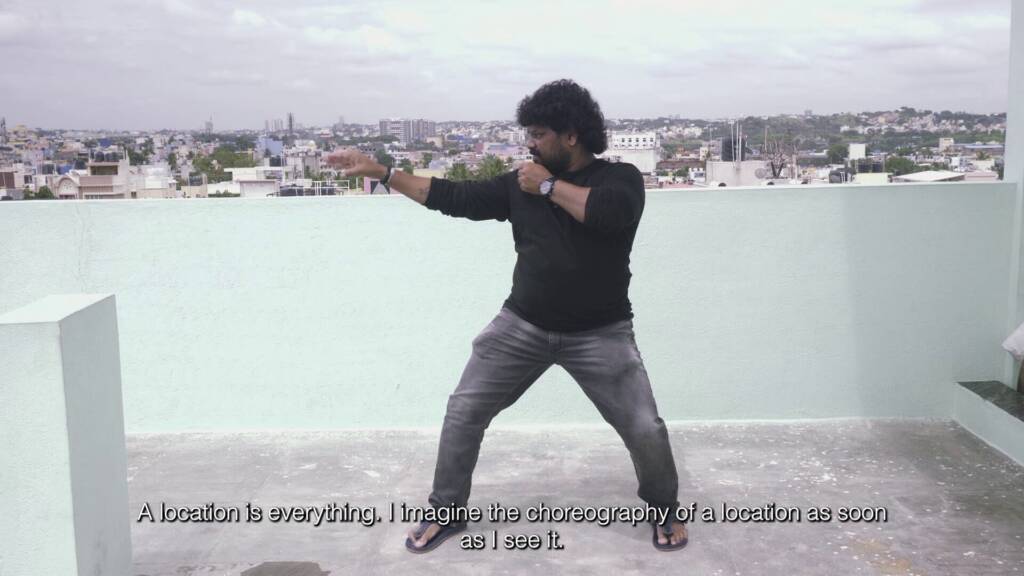

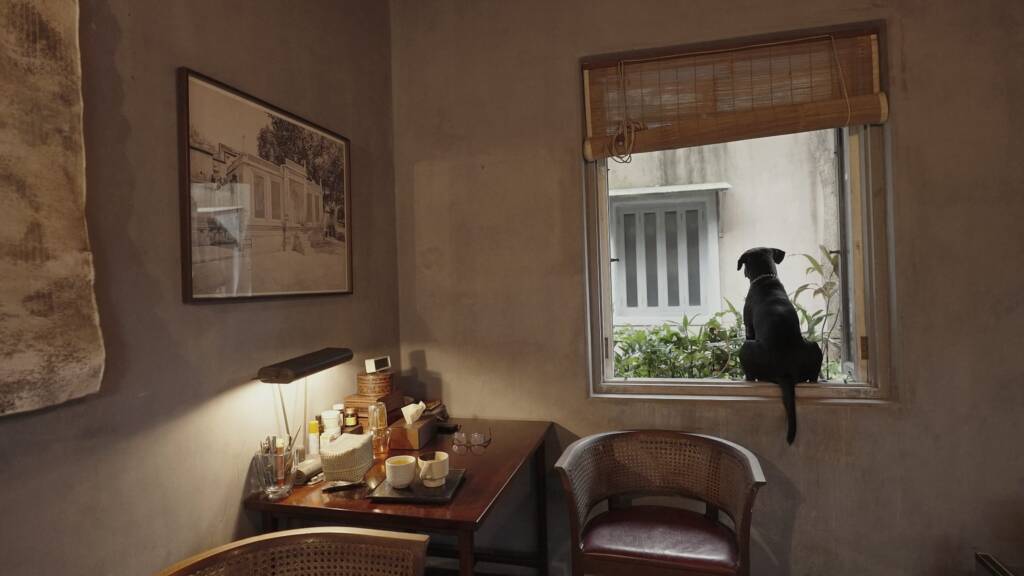
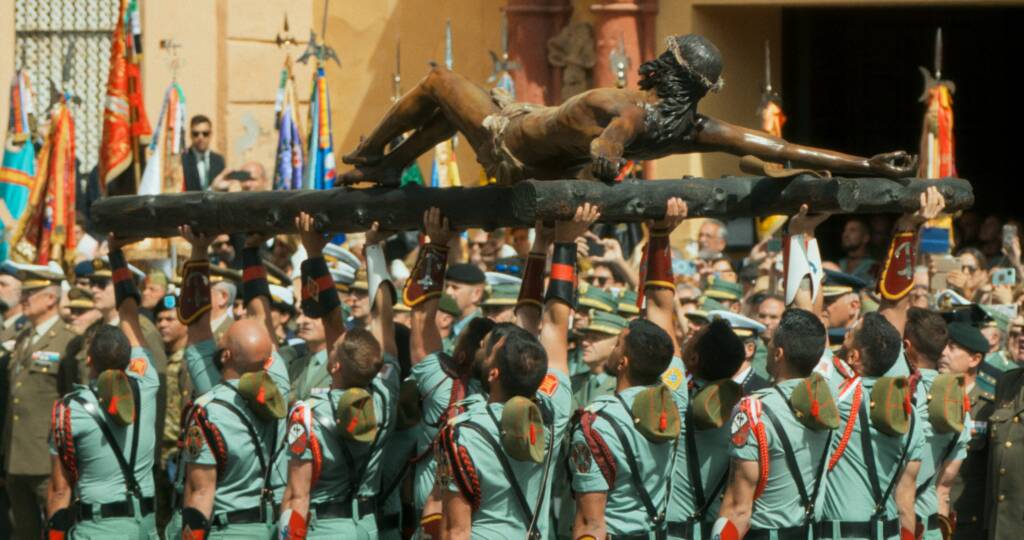





Recent Comments